INTRODUCTION
Ruth Wolf-Rehfeldt (1932) worked as an unofficial artist in East Germany from the beginning of the 1970s until German reunification after the fall of the Berlin Wall in 1990. Using an Erika-brand typewriter, she developed complex graphic compositions using text as image. Her timeless “typewritings”—diagrams, patterns, abstract poetry, and collages—form the starting point of this exhibition. Although Wolf-Rehfeldt worked in East Berlin and was subject to travel restrictions and strongly surveilled communication, she was an active member of the interna tional Mail Art movement and corresponded with artists in Europe, Asia, South America, and the United States. Therefore, her work can be found in many international archives.
Mail Art was particularly prevalent in the 1970s and 1980s in places where artists experienced state censorship, linking individual practitioners with shared sensibilities all over the world. This legacy was taken up by Los Angeles-based conceptual artist David Horvitz (1982) in a series of ongoing artistic exchanges with Wolf-Rehfeldt. Like Wolf-Rehfeldt, Horvitz is interested in processes of circulation and interconnectedness. In spite of the differences in mediums and technique, Wolf-Rehfeldt and Horvitz share a sensibility that is reflected in many parallels, both obvious and hidden, in their respective works.
Curated by Kathleen Reinhardt and first shown in the Albertinum Museum in Dresden, Germany, this exhibition is a homage to Mail Art and visual poetry recognizing their ongoing resonance in contemporary art.
For Ruth, The Sky in Los Angeles: Ruth Wolf-Rehfeldt and David Horvitz is generously supported by the Institut für Auslandsbeziehungen (IFA), Germany, and the Andy Warhol Foundation for the Visual Arts. Exhibition design by Kathleen Reinhardt , Joes Segal, and Emma Diffley.
1
Ruth Wolf-Rehfeldt, Extroverse Arrangements, 1972, carbon copy of typewriting. Courtesy of the artist, The Mail Archive of Ruth WolfRehfeldt and Robert Rehfeldt, and ChertLüdde
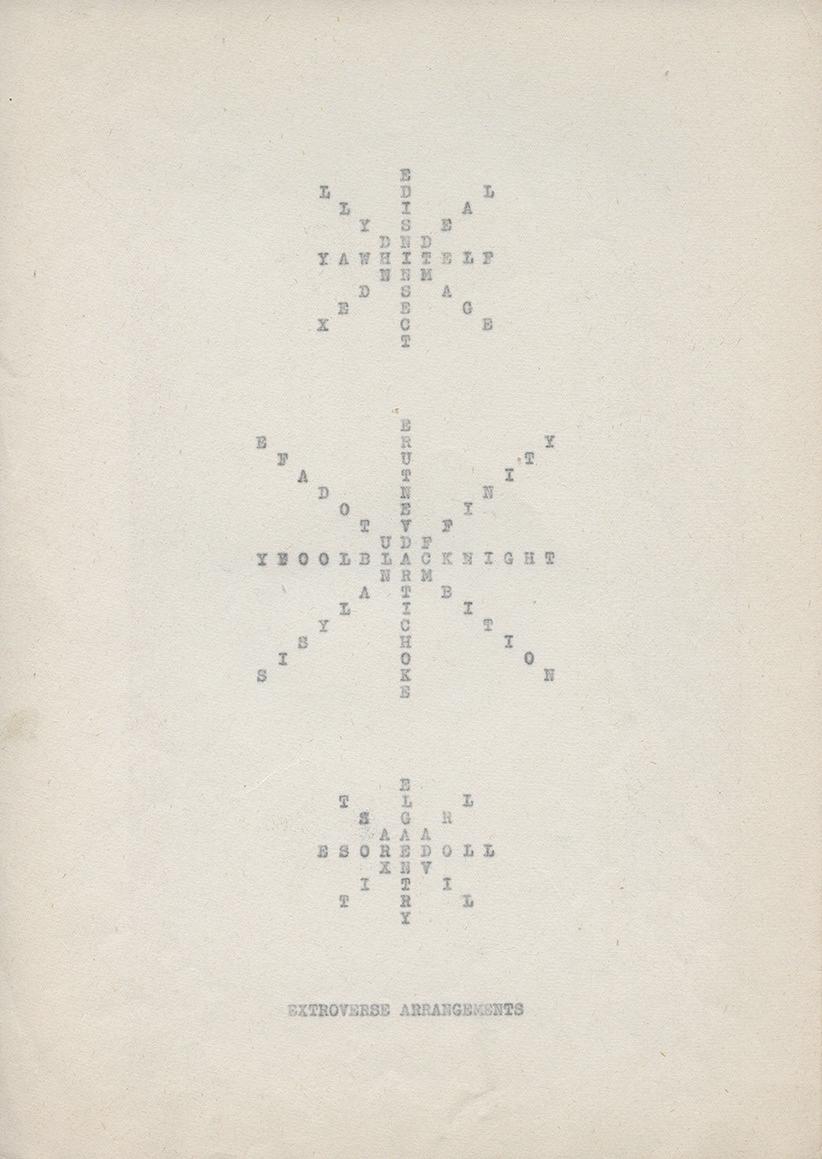
Ruth Wolf-Rehfeldt, Going Flowing Flying (Words Waves), 1974–1980, carbon copy of original typewriting. Courtesy of the artist, The Mail Archive of Ruth Wolf-Rehfeldt and Robert Rehfeldt, and ChertLüdde

RUTH WOLF- REHFELDT
2
Ruth Wolf-Rehfeldt, Gehen Wehen Fliegen [Going Flowing Flying] (Word Waves), 1974, carbon copy of original typewriting. Courtesy of the artist, The Mail Archive of Ruth Wolf-Rehfeldt and Robert Rehfeldt, and ChertLüdde

Ruth Wolf-Rehfeldt, Untitled, mid 1970s, original typewrit ing. Courtesy of the artist, The Mail Archive of Ruth Wolf-Rehfeldt and Robert Rehfeldt, and ChertLüdde
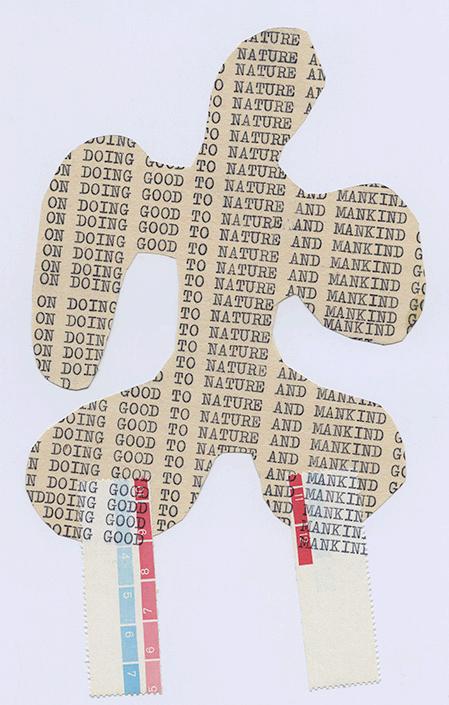
3
Ruth Wolf-Rehfeldt, Infor mation (Informationsbildung), 1970s, zincography. Courtesy of the artist, The Mail Archive of Ruth Wolf-Rehfeldt and Robert Rehfeldt, and ChertLüdde

Ruth Wolf-Rehfeldt, Opening Disclose, 1975, carbon copy of original typewriting. Courtesy of the artist, The Mail Archive of Ruth Wolf-Rehfeldt and Robert Rehfeldt, and ChertLüdde
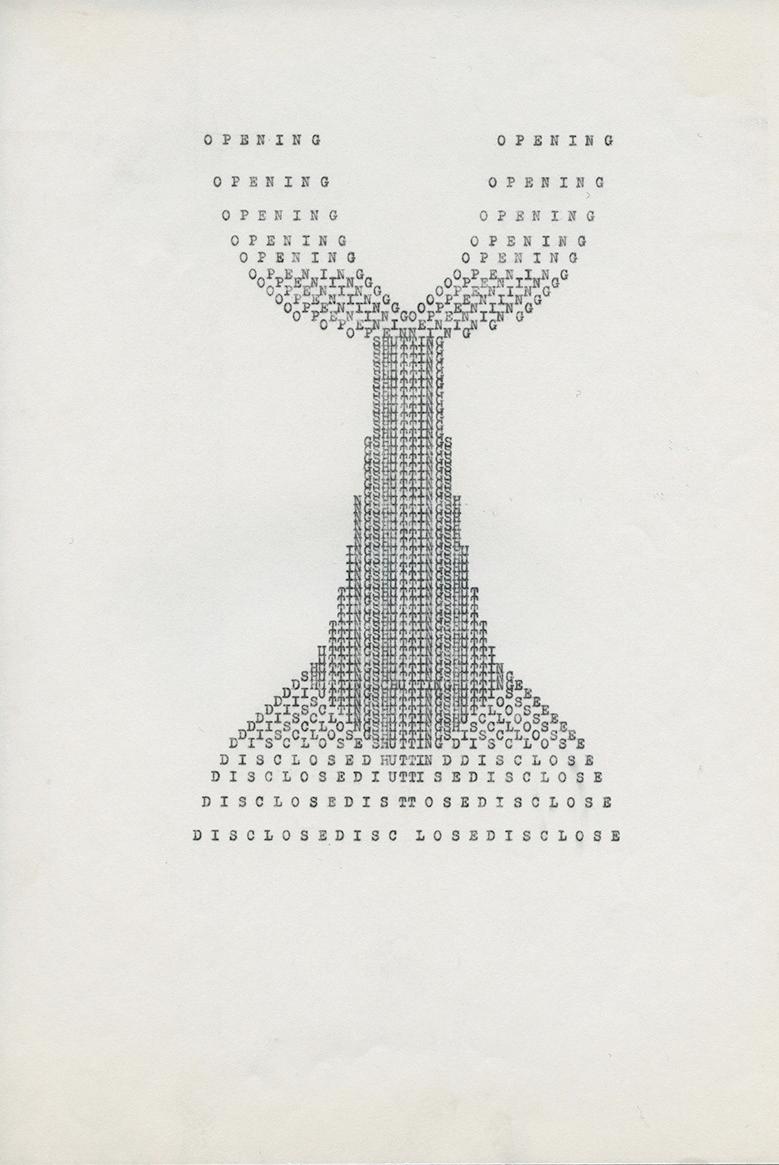
4
Ruth Wolf-Rehfeldt, Nature Culture, 1972, carbon copy of original typewriting.
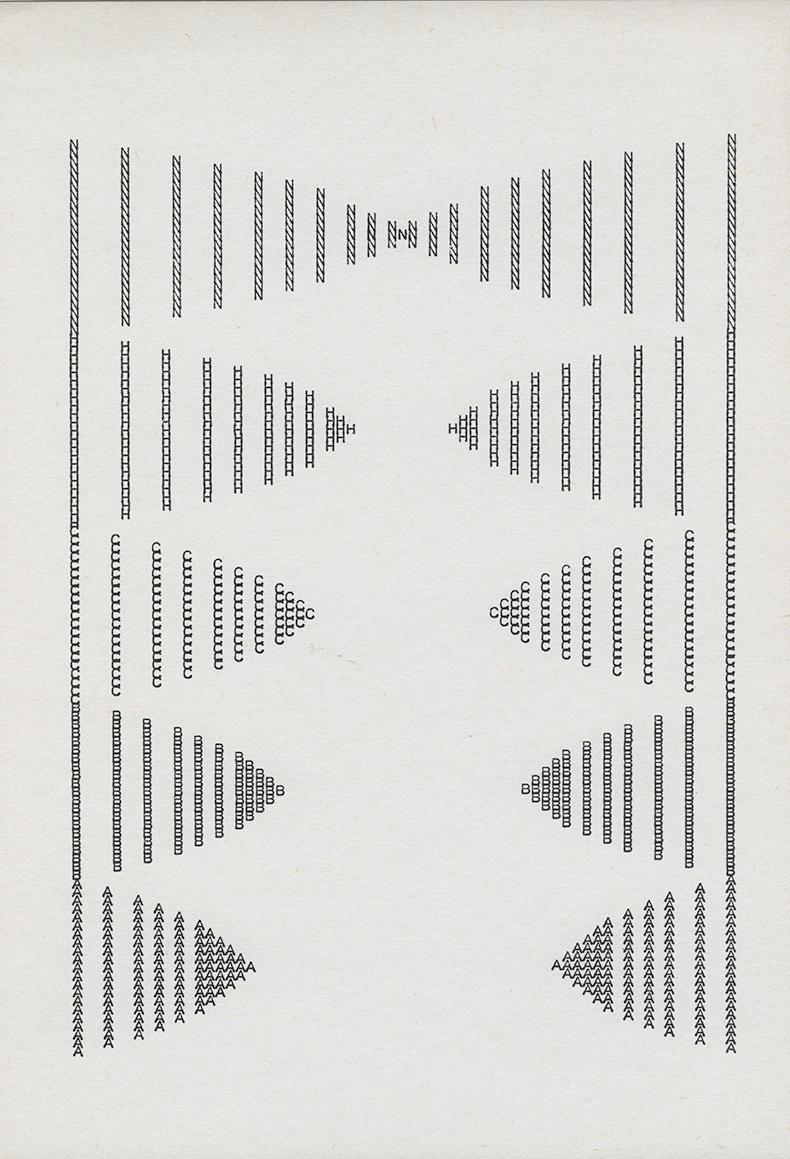
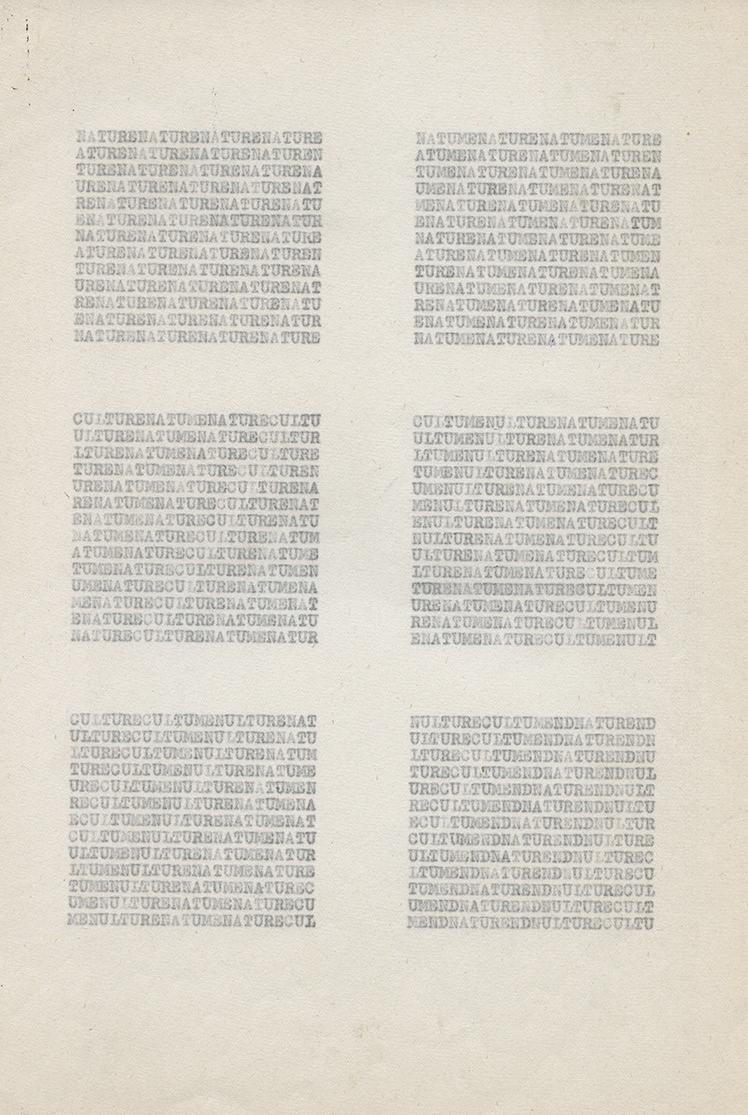
Courtesy of the artist, The Mail Archive of Ruth Wolf-Rehfeldt and Robert Rehfeldt, and ChertLüdde
Ruth Wolf-Rehfeldt, Letzten ABC / Last ABC, 1983, zincography. Courtesy of the artist, The Mail Archive of Ruth Wolf-Rehfeldt and Robert Rehfeldt, and ChertLüdde
5
Ruth Wolf-Rehfeldt, Limits – Endlessness, n.d., zincography. Courtesy of the artist, The Mail Archive of Ruth WolfRehfeldt and Robert Reh feldt, and ChertLüdde
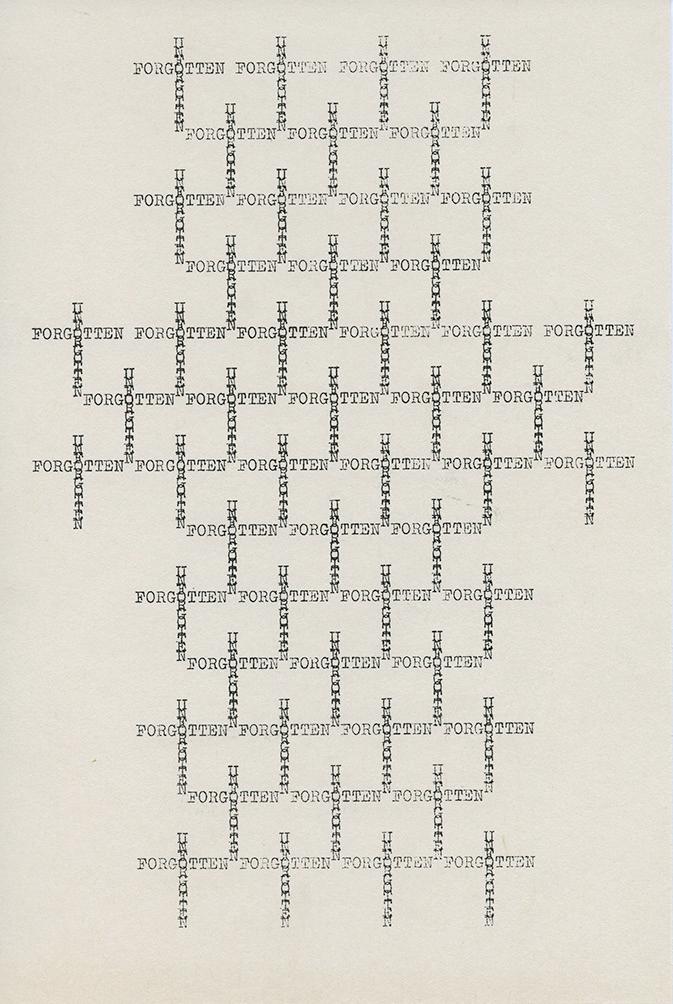
Ruth Wolf-Rehfeldt, Forgotten – Unforgotten, n.d., zincography. Courtesy of the artist, The Mail Archive of Ruth Wolf-Rehfeldt and Robert Rehfeldt, and ChertLüdde
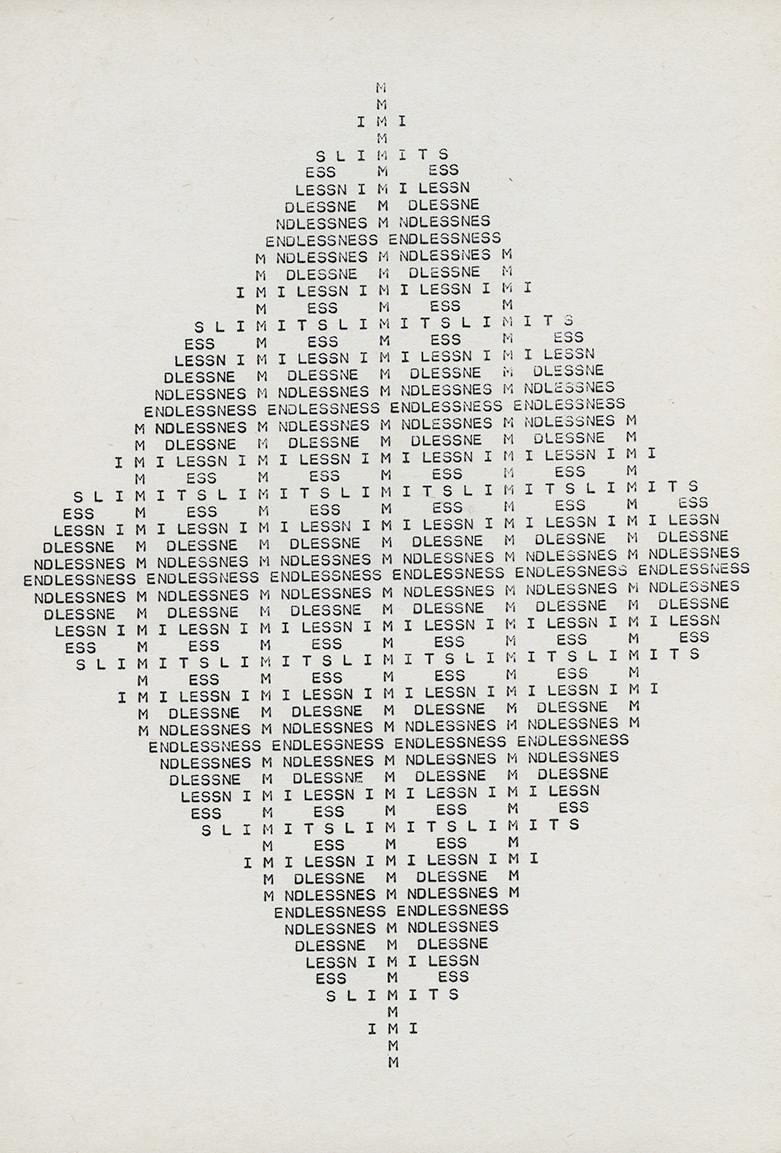
6
Ruth Wolf-Rehfeldt, Figuration collagiert, 1980s, collage on zincography. Courtesy of the artist, The Mail Archive of Ruth Wolf-Rehfeldt and Robert Rehfeldt, and ChertLüdde
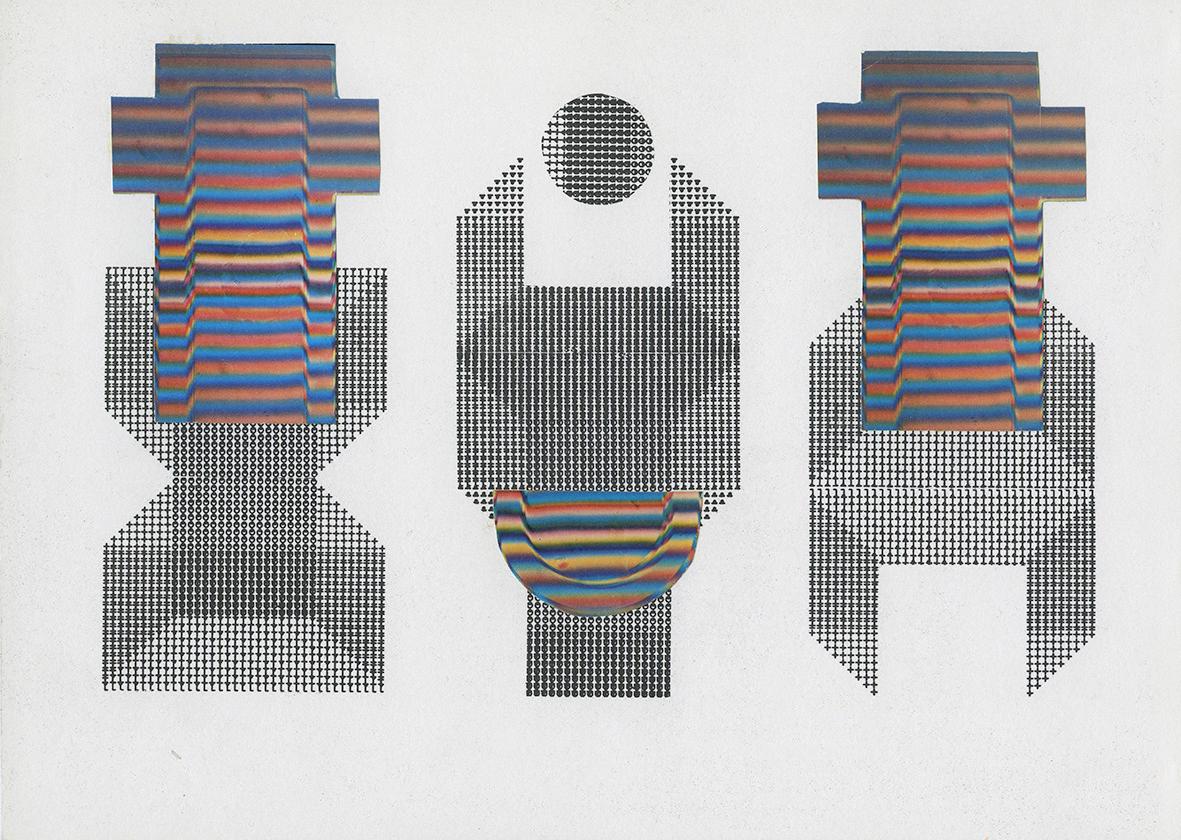
Ruth Wolf-Rehfeldt, Beton, Denkmal für Richard Oakes [Concrete, Monument for Richard Oakes], 1975, carbon copy of original typewriting. Courtesy of the artist, The Mail Archive of Ruth Wolf-Rehfeldt and Robert Rehfeldt, and ChertLüdde

7
Ruth Wolf-Rehfeldt, Cagy Being (Käfigwesen), 1980s, collage on zincography. Courtesy of the artist, The Mail Archive of Ruth Wolf-Rehfeldt and Robert Rehfeldt, and ChertLüdde
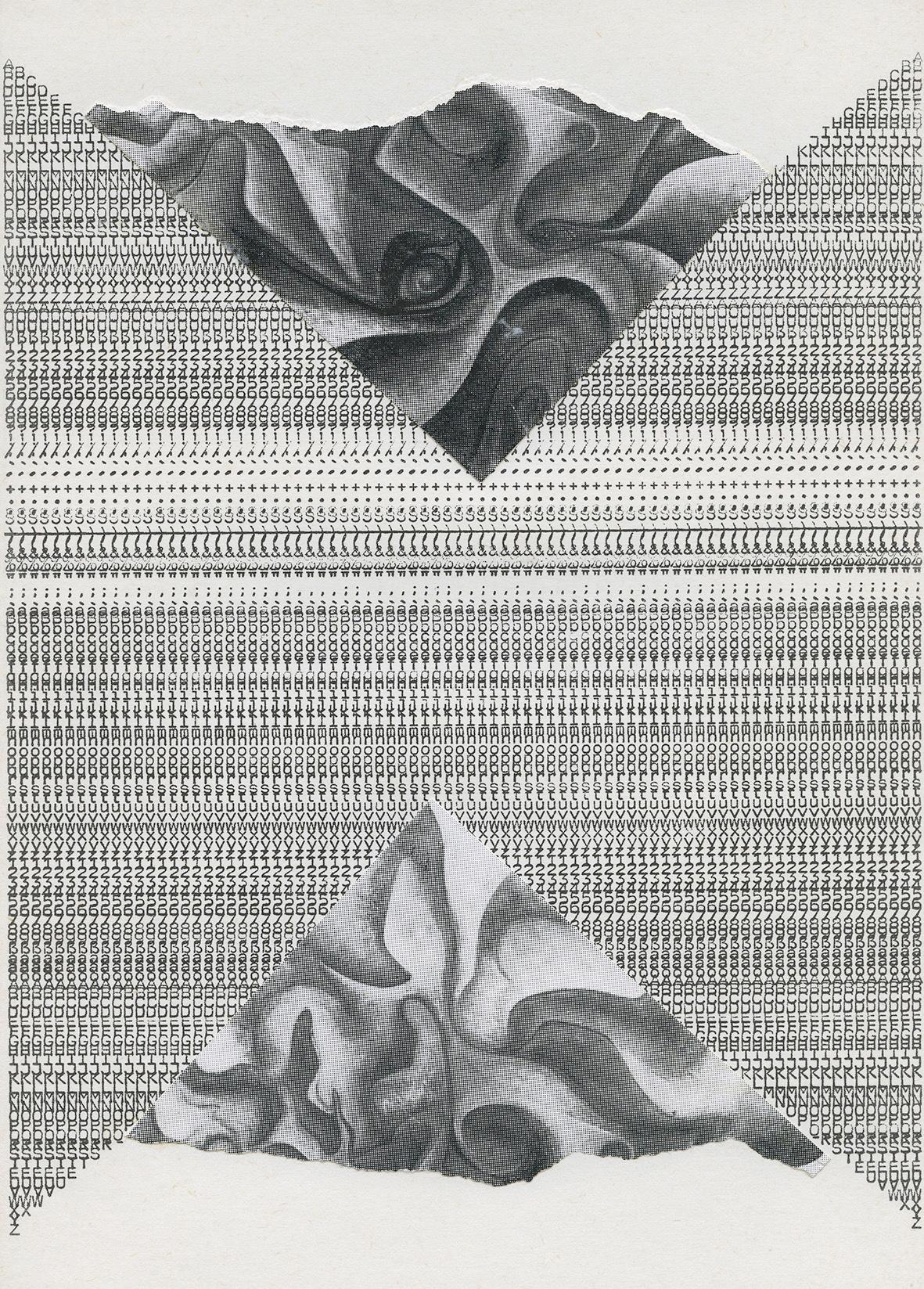
Ruth Wolf-Rehfeldt, Untitled, 1980s, collage on zincography. Courtesy of the artist, The Mail Archive of Ruth Wolf- Rehfeldt and Robert Rehfeldt, and ChertLüdde
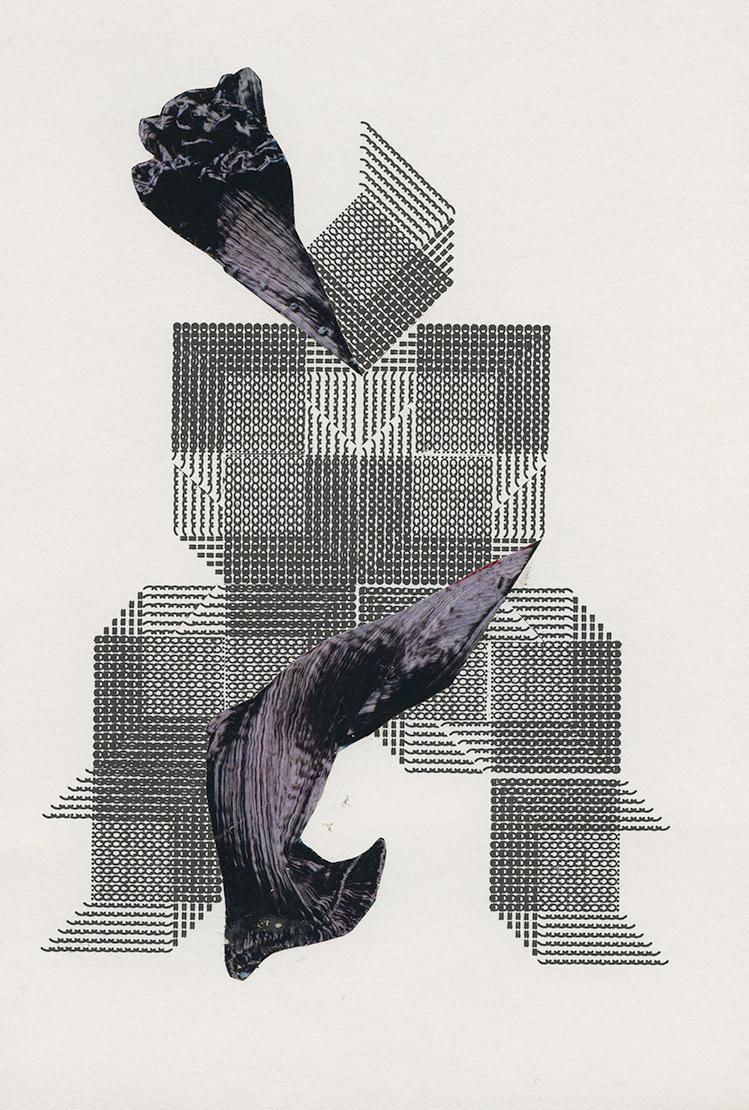
8
Ruth Wolf-Rehfeldt, Piece by Piece for PEACE, n.d., zincography. Courtesy of the artist, The Mail Archive of Ruth Wolf-Rehfeldt and Robert Rehfeldt, and ChertLüdde
Ruth Wolf-Rehfeldt, Doing Good, 1974, carbon copy of original typewriting. Courtesy of the artist, The Mail Archive of Ruth Wolf-Rehfeldt and Robert Rehfeldt, and ChertLüdde
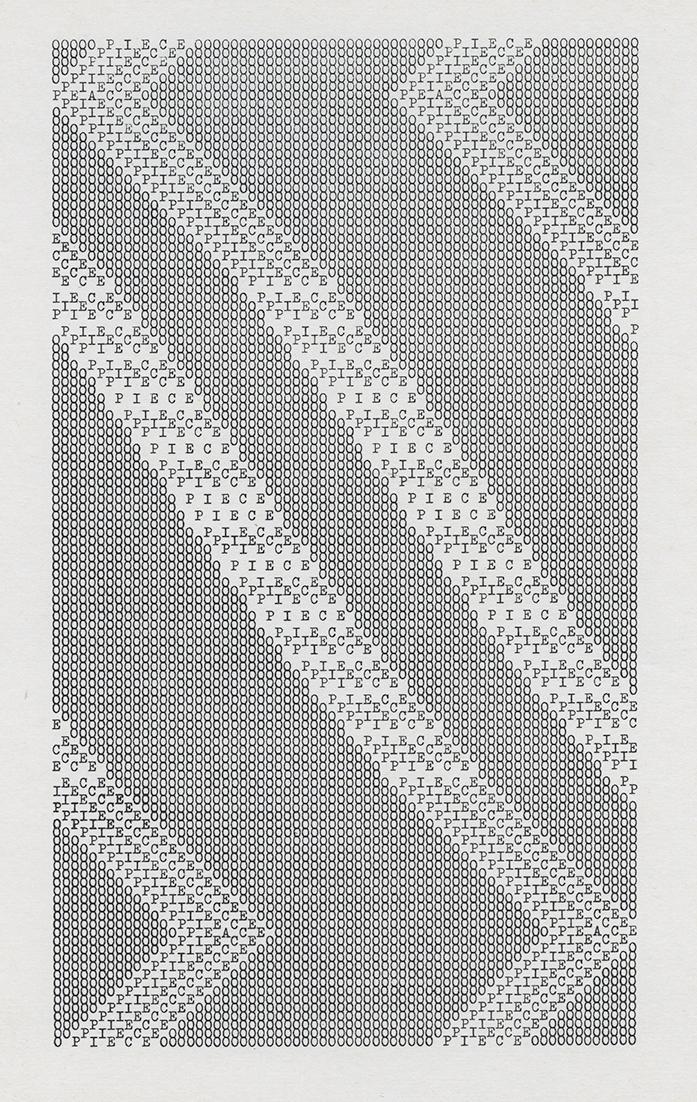
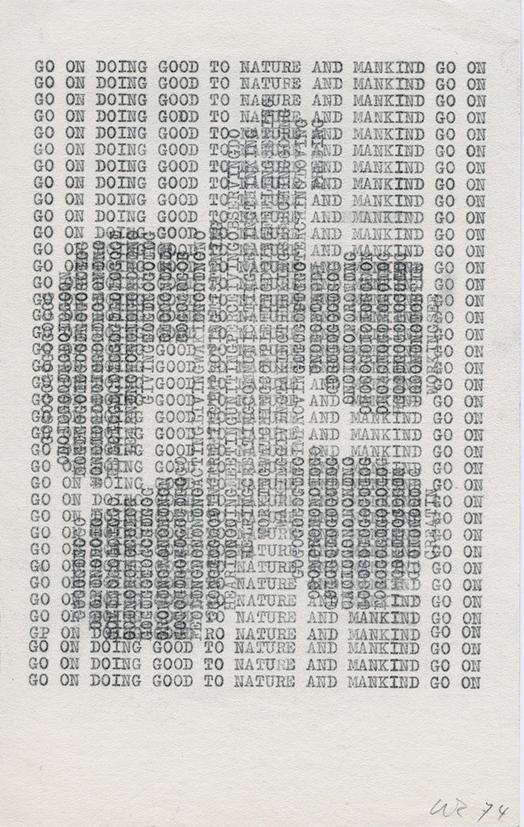
9
Ruth Wolf-Rehfeldt, Undeterminated Sum, late 1980s, original typewriting. Courtesy of the artist, The Mail Archive of Ruth Wolf-Rehfeldt and Robert Rehfeldt, and ChertLüdde

Ruth Wolf-Rehfeldt, Untitled, 1980s, collage on zincography on card. Courtesy of the artist, The Mail Archive of Ruth Wolf-Rehfeldt and Robert Rehfeldt, and ChertLüdde
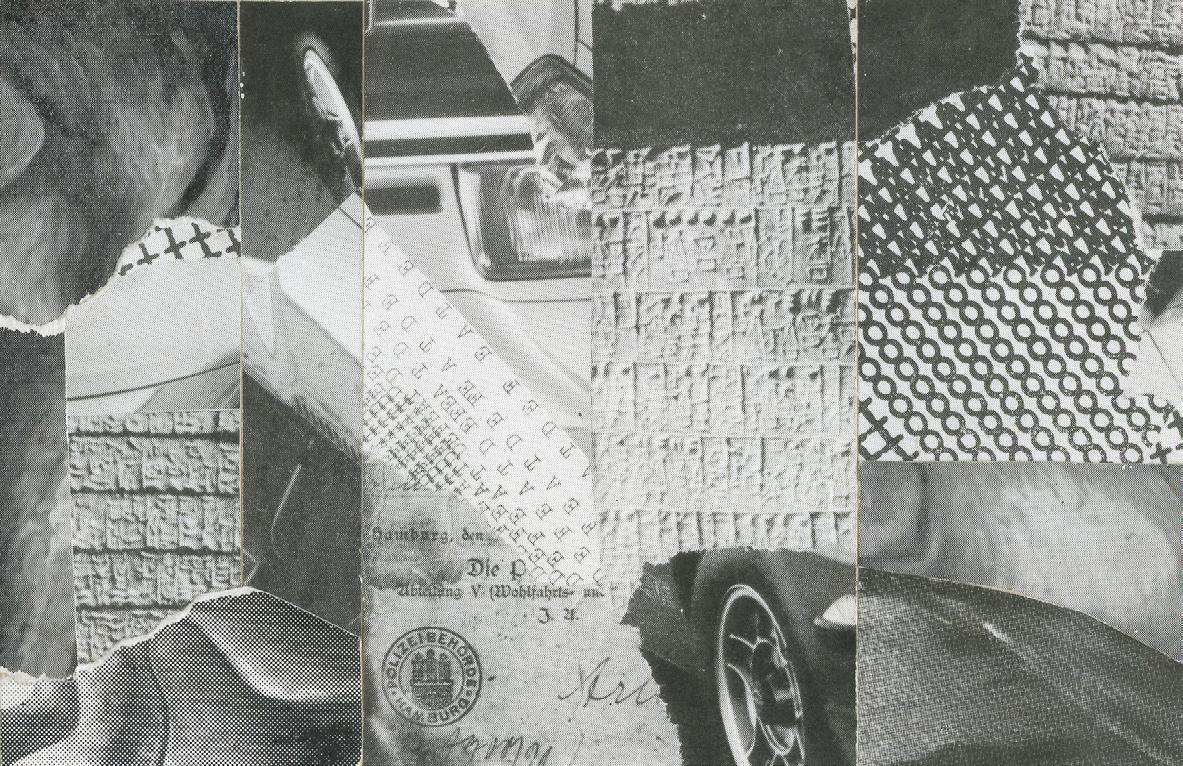
10
Ruth Wolf-Rehfeldt, Wait, ca. 1974, carbon copy of original typewriting. Courtesy of the artist, The Mail Archive of Ruth WolfRehfeldt and Robert Rehfeldt, and ChertLüdde
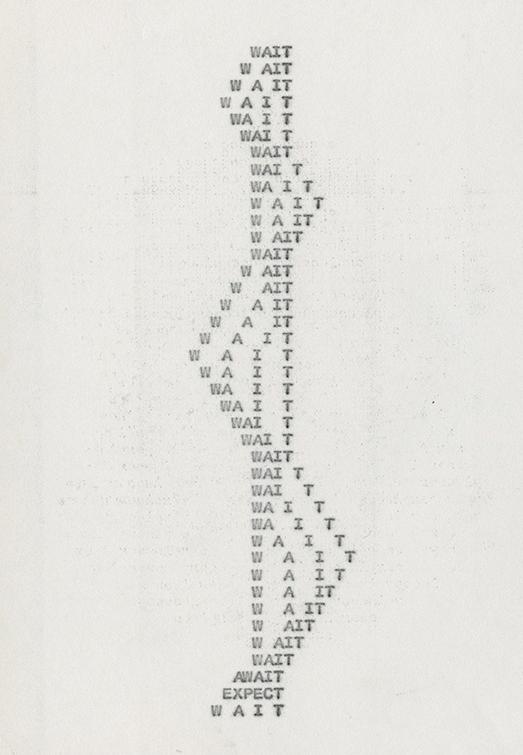
Ruth Wolf-Rehfeldt, Tannenbaum collagiert [pine tree collage], 1980s, collage on zincography on card. Courtesy of the artist, The Mail Archive of Ruth Wolf-Rehfeldt and Robert Rehfeldt, and ChertLüdde
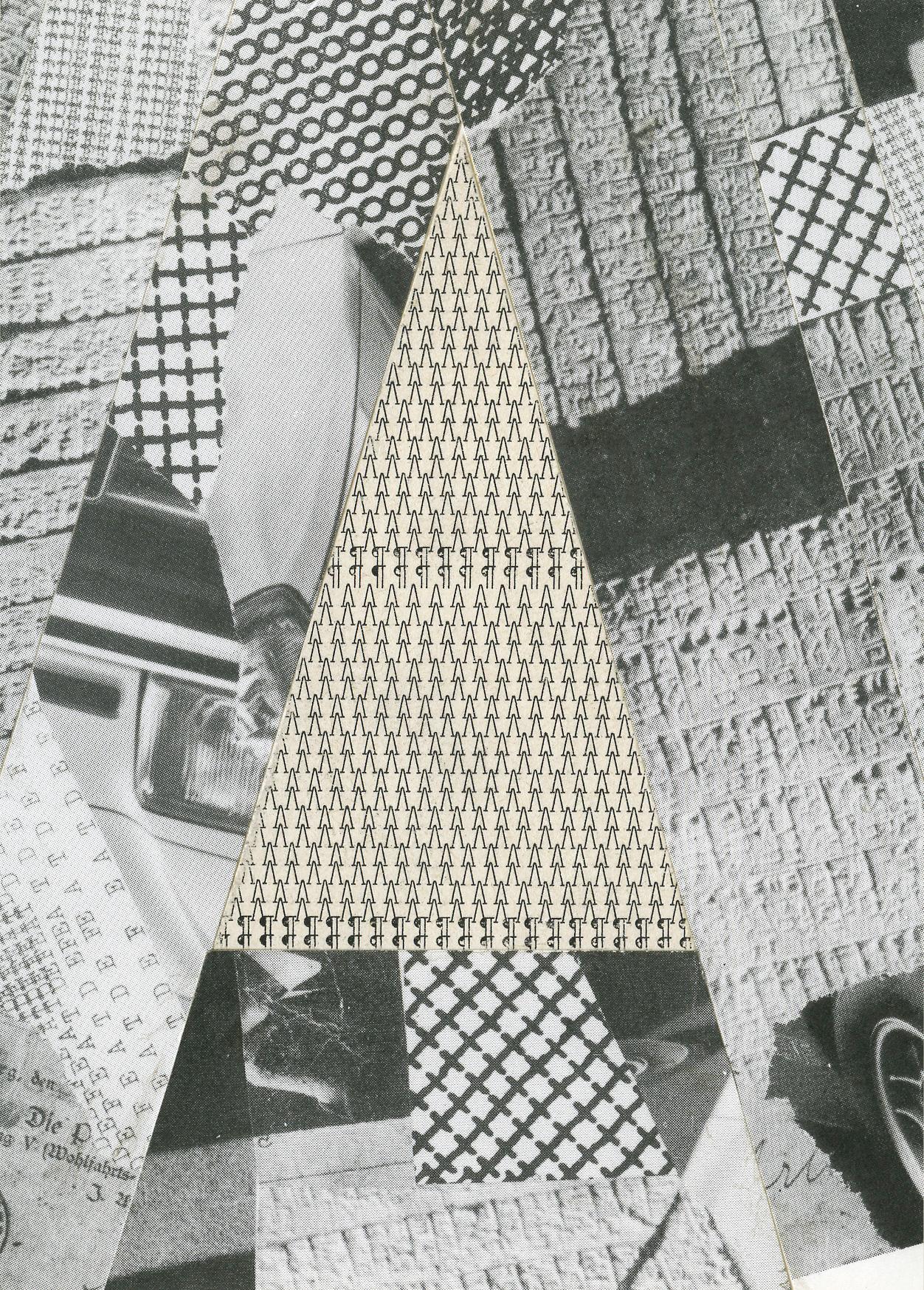
11
Ruth Wolf-Rehfeldt, Paraphrase, n.d., carbon copy of original typewrit ing. Courtesy of the artist, The Mail Archive of Ruth Wolf-Rehfeldt and Robert Rehfeldt, and ChertLüdde
Ruth Wolf-Rehfeldt, AIR, late 1970s, original type writing on blue paper (12 parts). Courtesy of the artist, The Mail Archive of Ruth Wolf-Rehfeldt and Robert Rehfeldt, and ChertLüdde
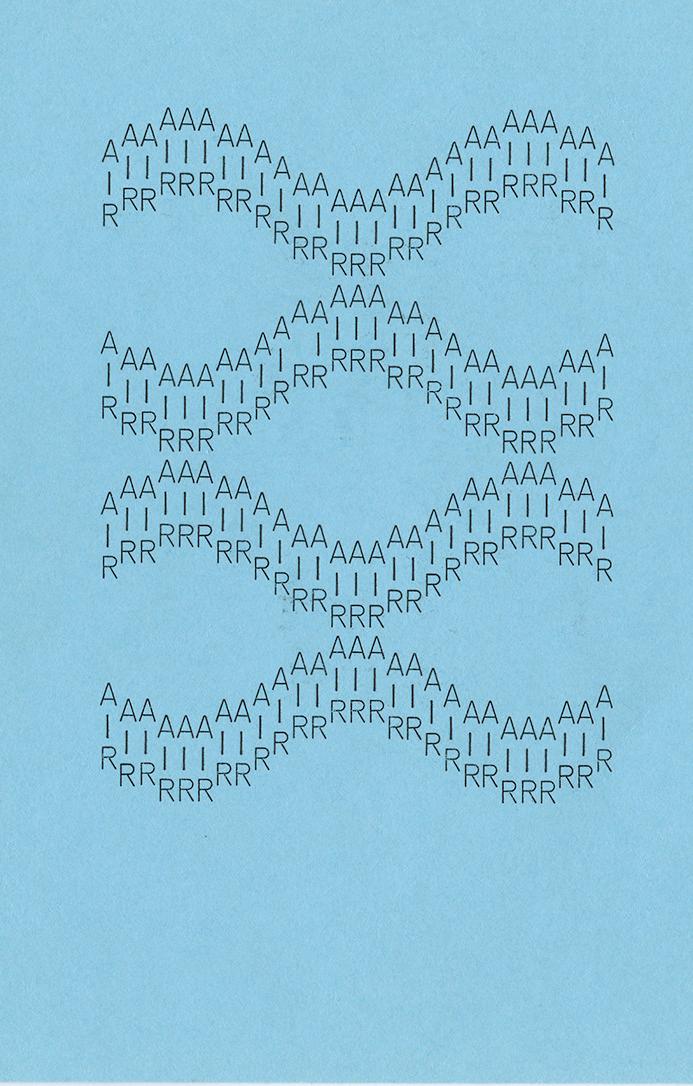
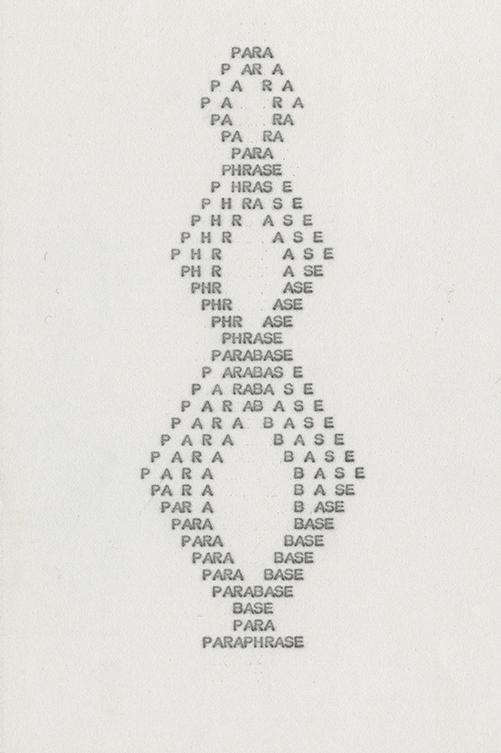
12
Ruth Wolf-Rehfeldt, Undeterminated Sum, late 1980s, original typewriting. Courtesy of the artist, The Mail Archive of Ruth Wolf-Rehfeldt and Robert Rehfeldt, and ChertLüdde

Ruth Wolf-Rehfeldt, Untitled (stencil), mid 1970s, original type writing. Courtesy of the artist, The Mail Archive of Ruth Wolf-Rehfeldt and Robert Rehfeldt, and ChertLüdde
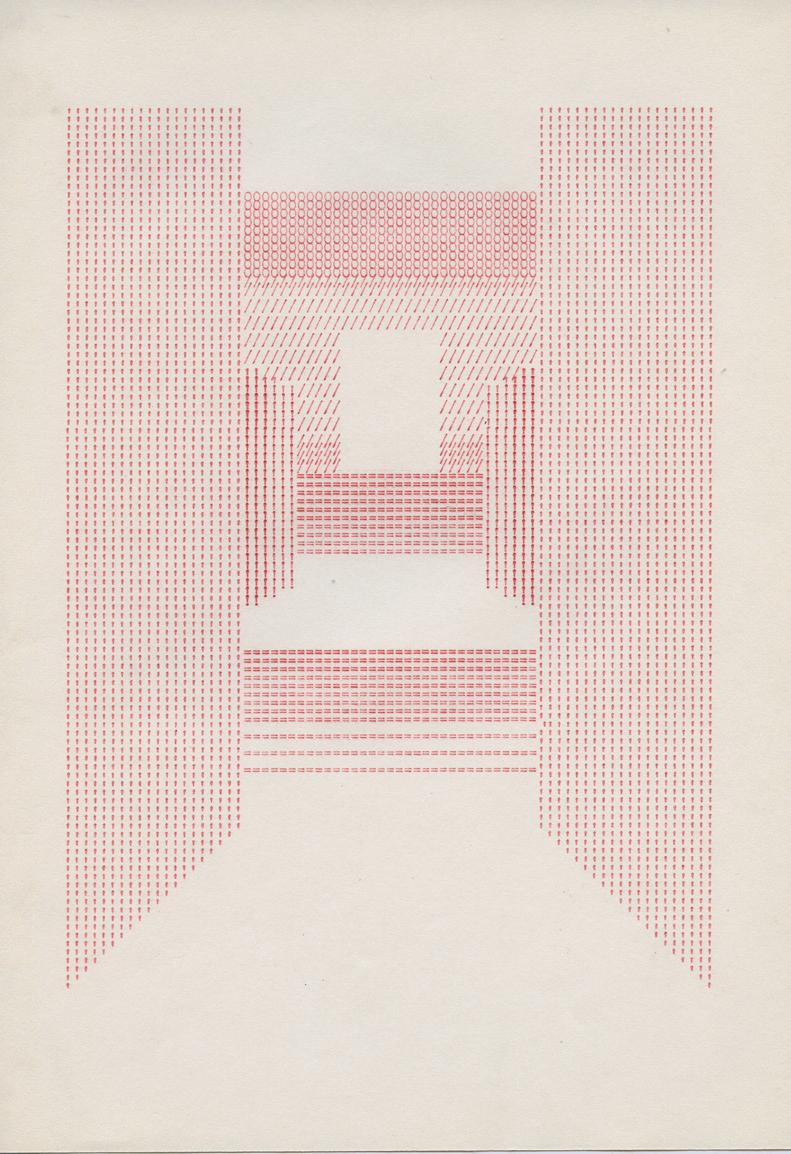
13
Ruth Wolf-Rehfeldt, Far Back Must Go Who Wants To Do a Big Jump (Wörter Series) [Word Series], mid 1970s, original typewriting. Courtesy of the artist, The Mail Archive of Ruth Wolf-Rehfeldt and Robert Rehfeldt, and ChertLüdde

Ruth Wolf-Rehfeldt, Gehen zurück weit [go back far] (Wörter series) [Word Series], mid 1970s, original typewriting. Courtesy of the artist, The Mail Archive of Ruth Wolf-Rehfeldt and Robert Rehfeldt, and ChertLüdde
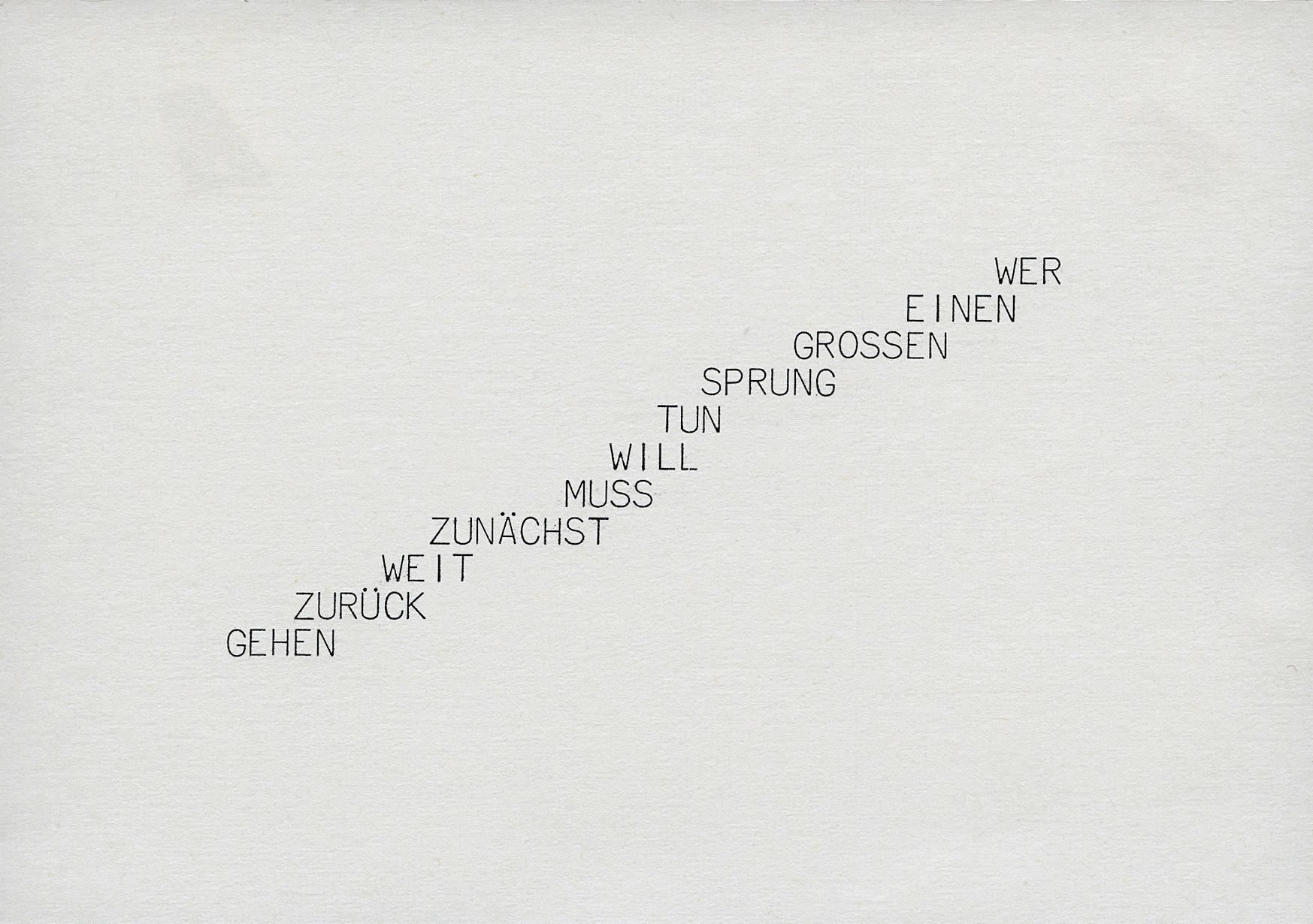
14
Ruth Wolf-Rehfeldt, Atomic Tree, mid 1970s, original typewriting. Courtesy of the artist, The Mail Archive of Ruth Wolf-Rehfeldt and Robert Rehfeldt, and ChertLüdde

Ruth Wolf-Rehfeldt, Wortverschiebung (Wörter series) [Word Shifting] (Word Series), mid 1970s, original typewriting. Courtesy of the artist, The Mail Archive of Ruth Wolf-Rehfeldt and Robert Rehfeldt, and ChertLüdde
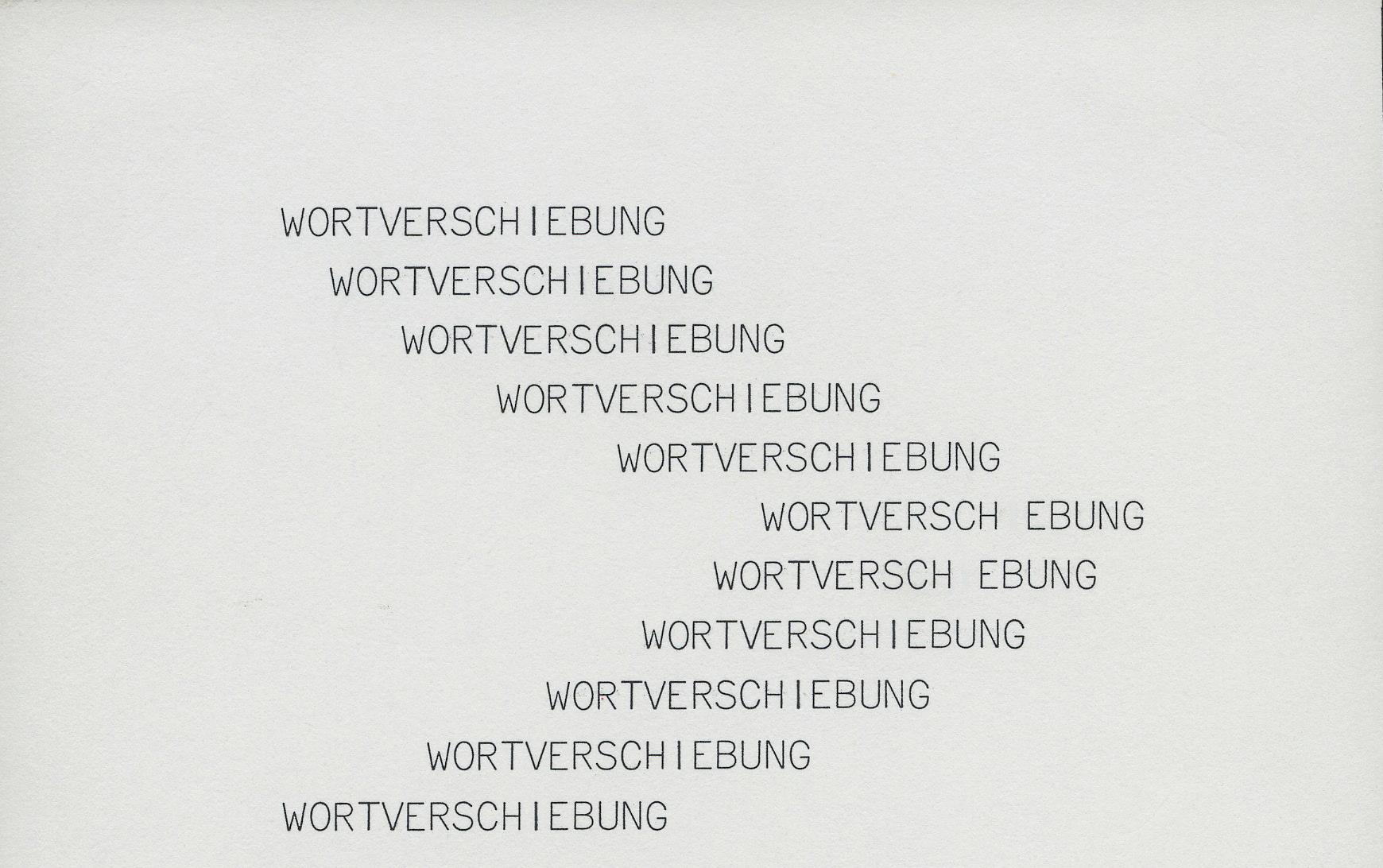
15
Ruth Wolf-Rehfeldt, Ortverschiebung [Place Shifting] (Wörter series) (Word Series), mid 1970s, original typewriting. Courtesy of the artist, The Mail Archive of Ruth Wolf-Rehfeldt and Robert Rehfeldt, and ChertLüdde
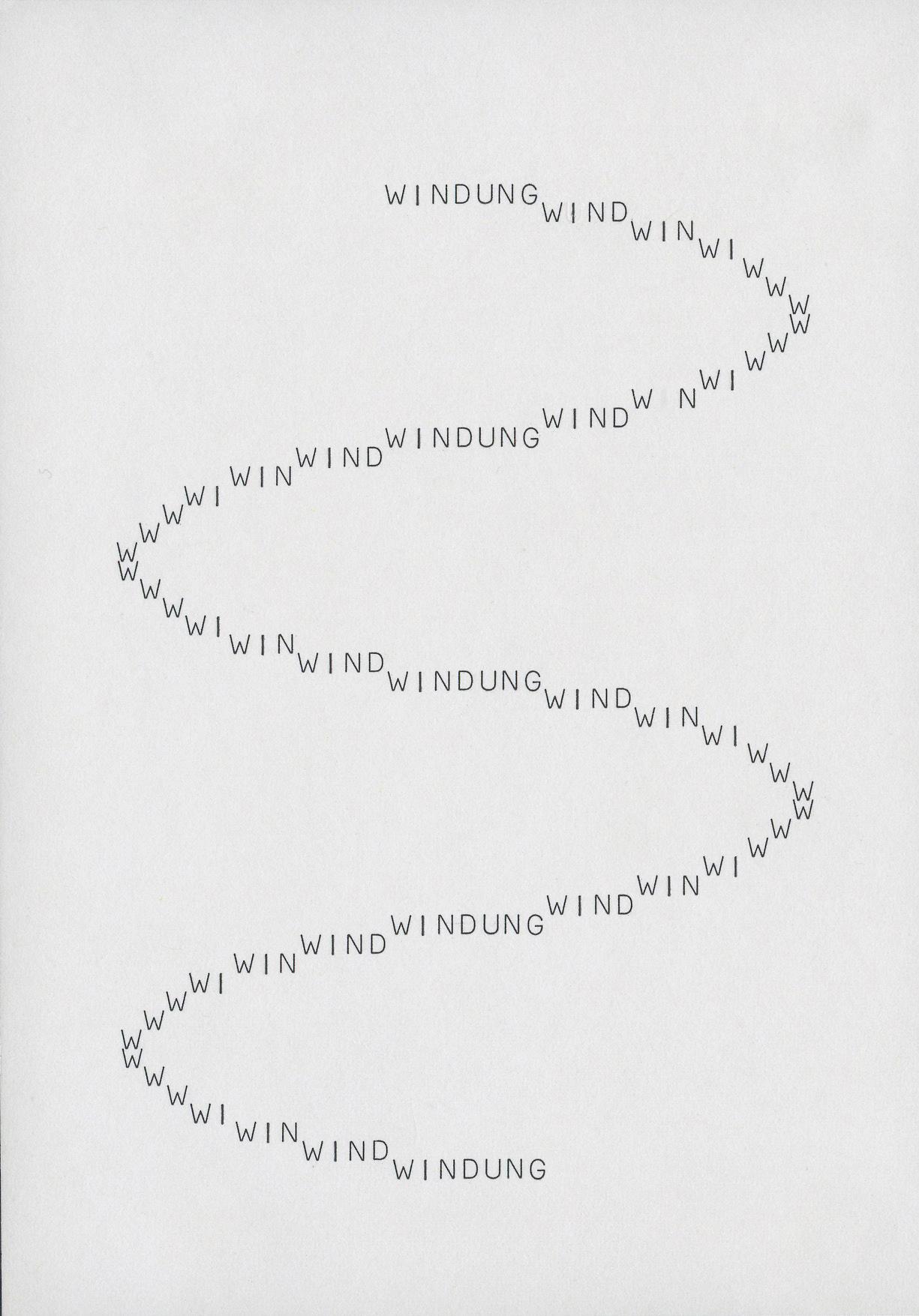
Ruth Wolf-Rehfeldt, Wende Wendel Winde Windung Wendel, n.d., original typewriting (5 parts). Courtesy of the artist, The Mail Archive of Ruth Wolf-Rehfeldt and Robert Rehfeldt, and ChertLüdde

16
Ruth Wolf-Rehfeldt, Artmosphere, 1970s, zincography. Courtesy of the artist, The Mail Archive of Ruth Wolf-Rehfeldt and Robert Rehfeldt, and ChertLüdde
Ruth Wolf-Rehfeldt, Growth, 1970s, zincography. Courtesy of the artist, The Mail Archive of Ruth WolfRehfeldt and Robert Rehfeldt, and ChertLüdde
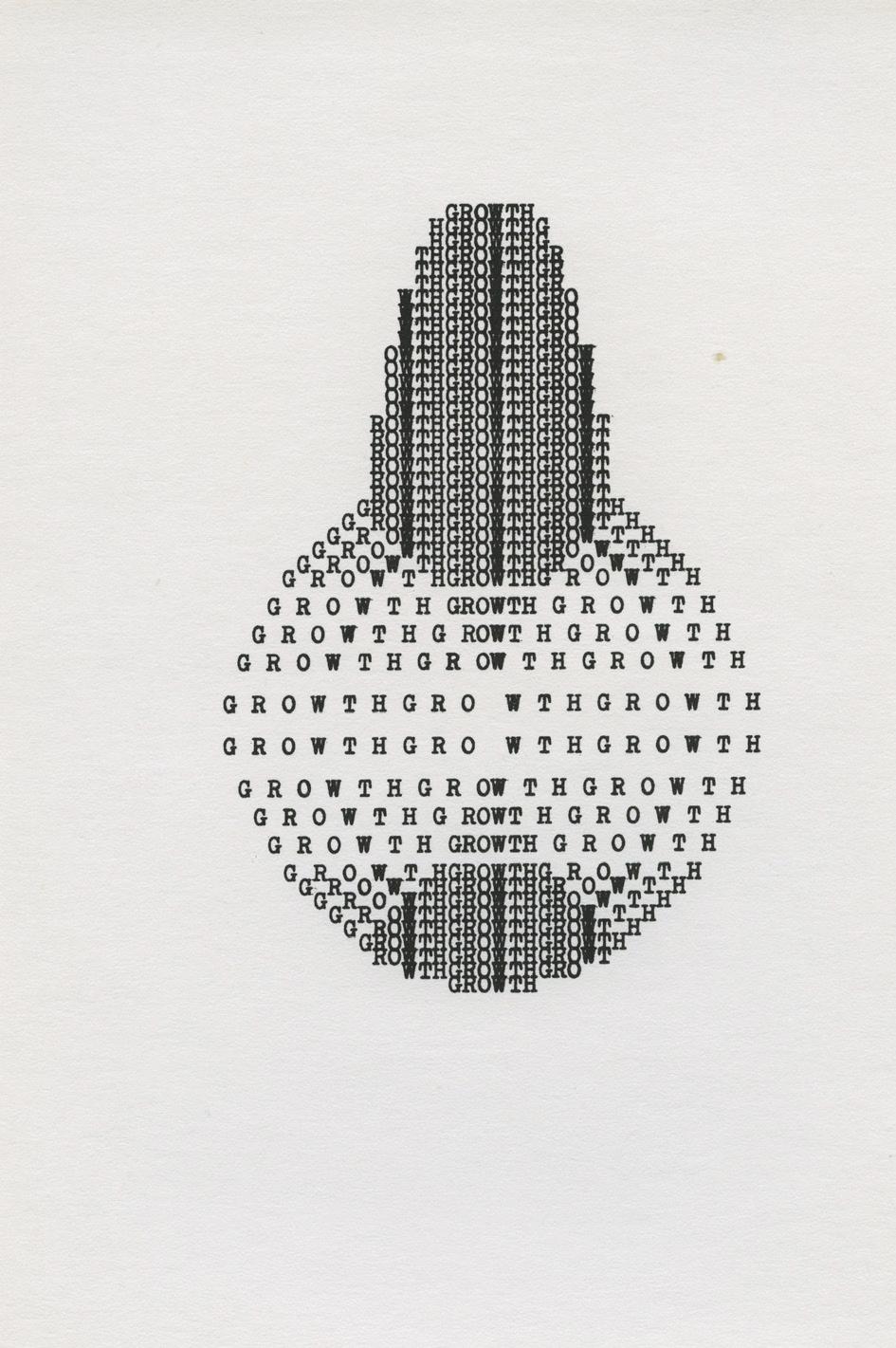
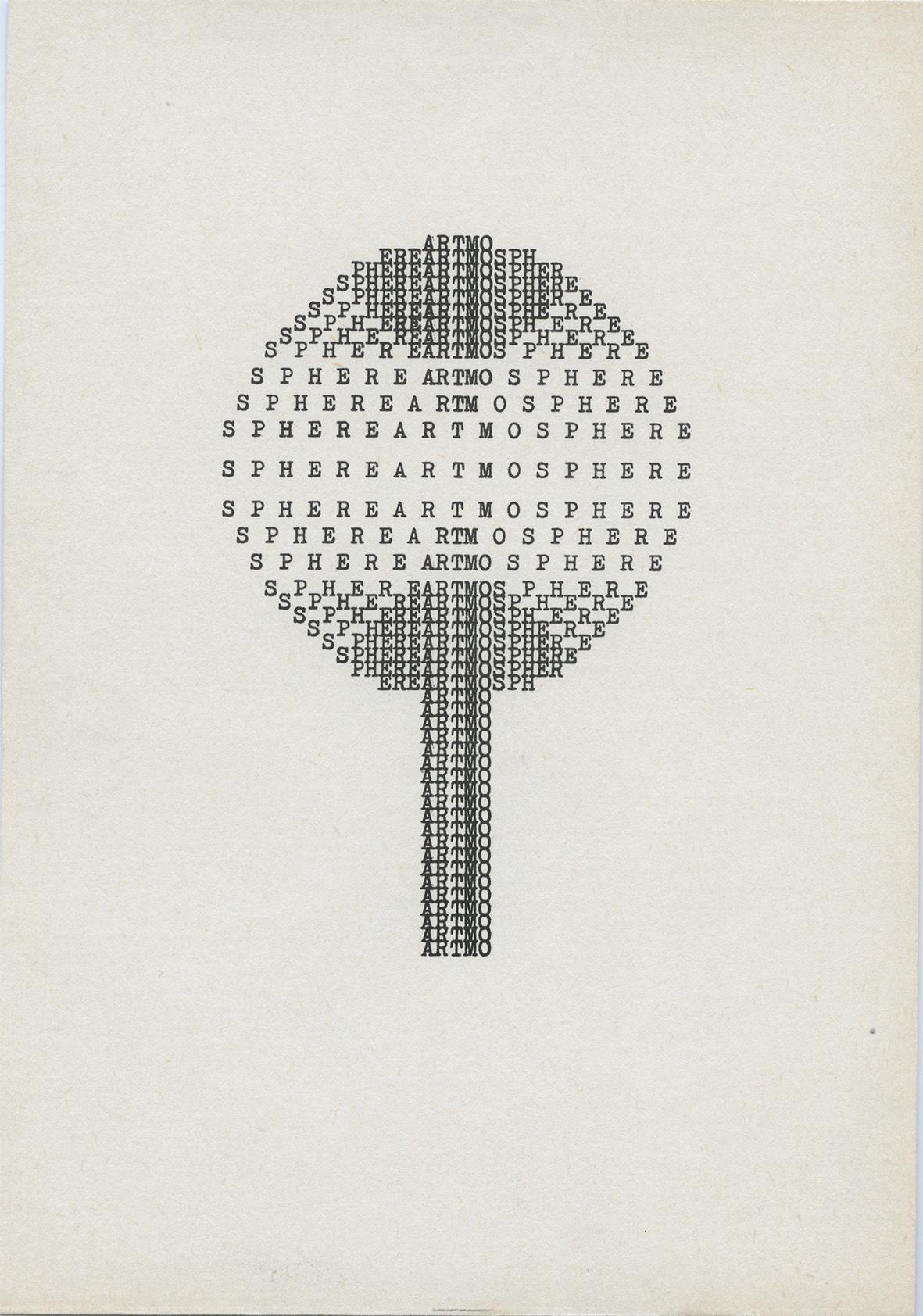
17
Ruth Wolf-Rehfeldt, Evolution, n.d., zincography. Courtesy of the artist, The Mail Archive of Ruth Wolf-Rehfeldt and Robert Rehfeldt, and ChertLüdde
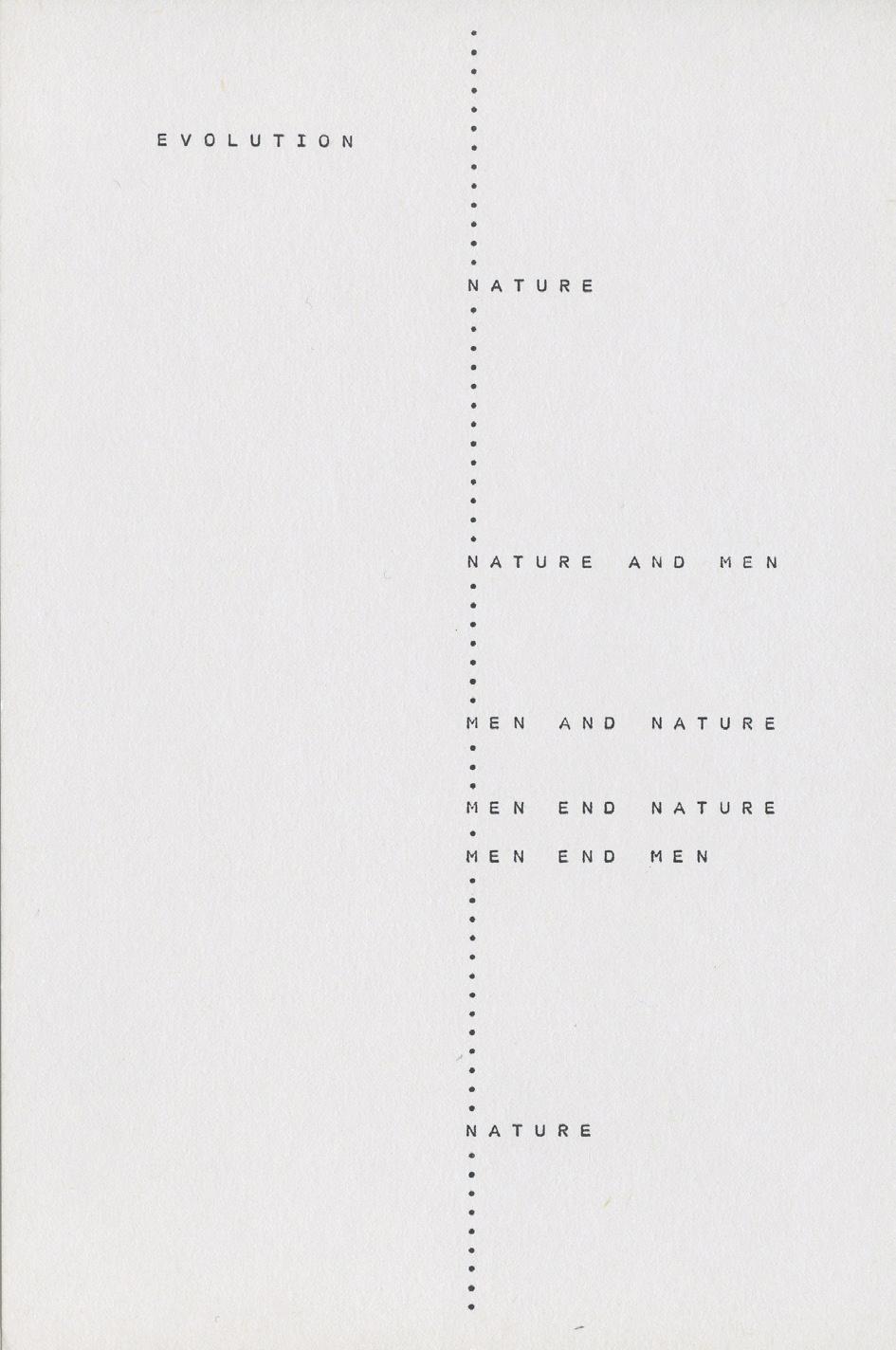
Ruth Wolf-Rehfeldt, Defeat / Victory, 1976, block print on paper. several original examples. Courtesy of the artist, The Mail Archive of Ruth Wolf-Rehfeldt and Robert Rehfeldt, and ChertLüdde
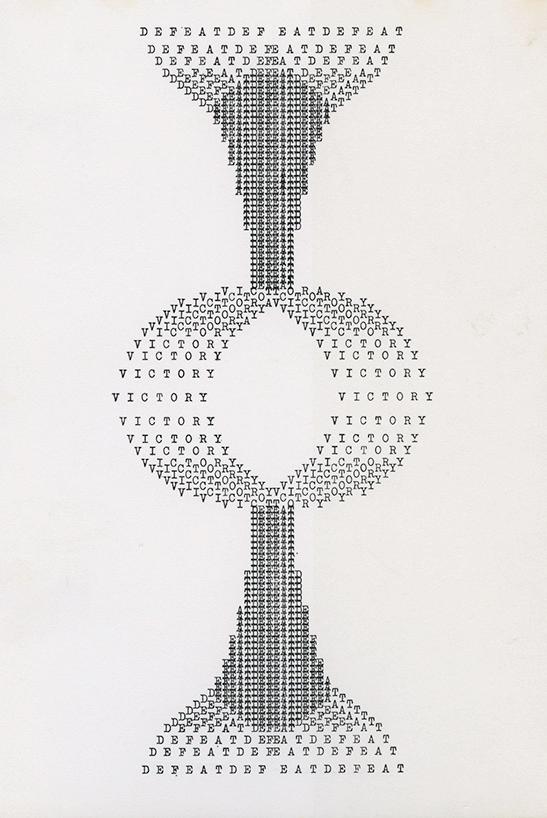
18
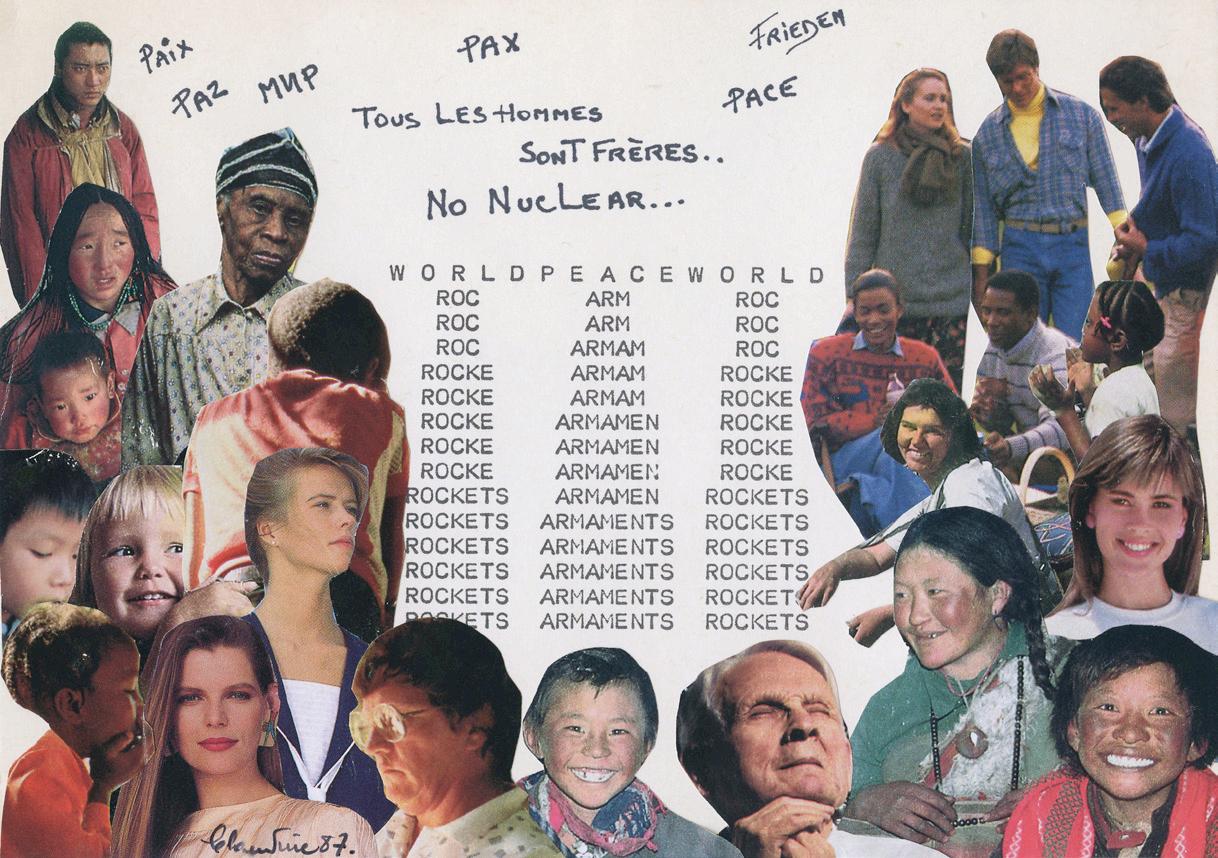
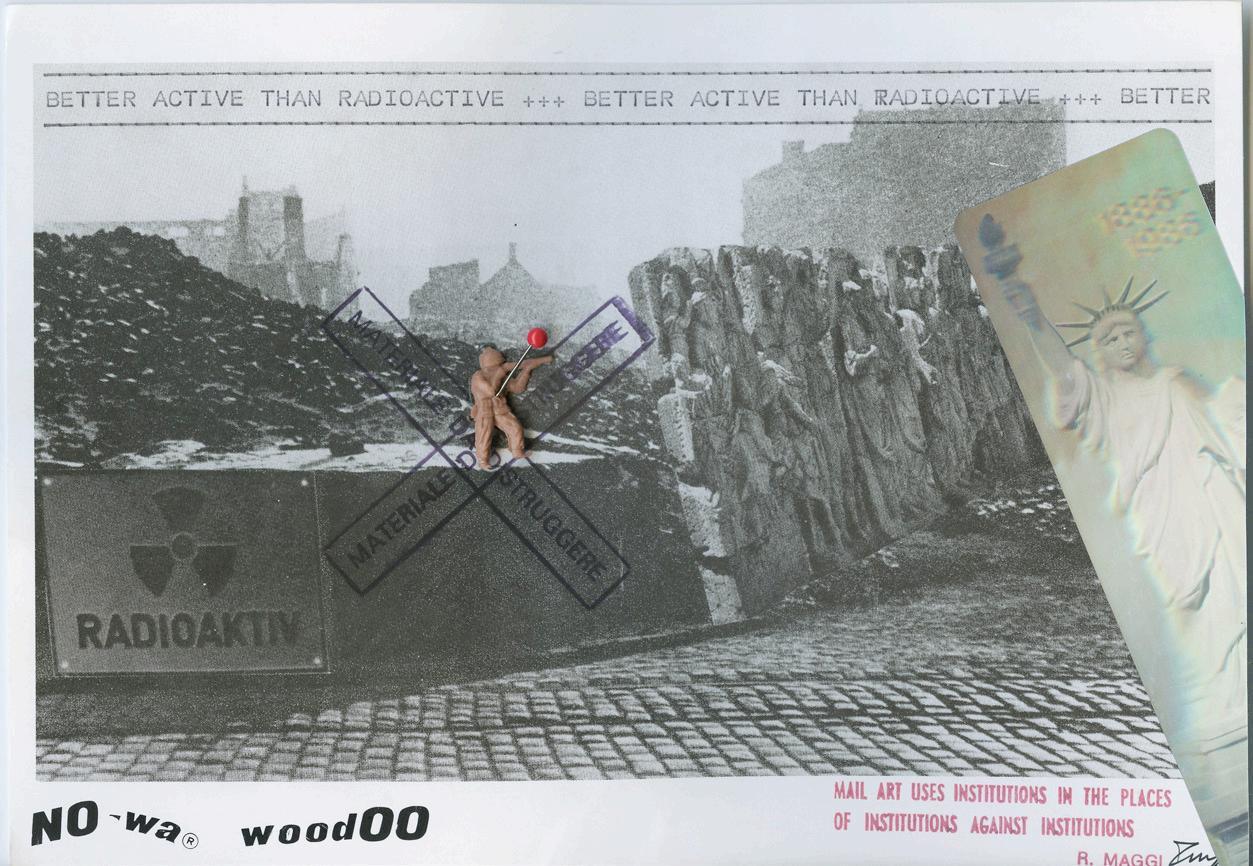
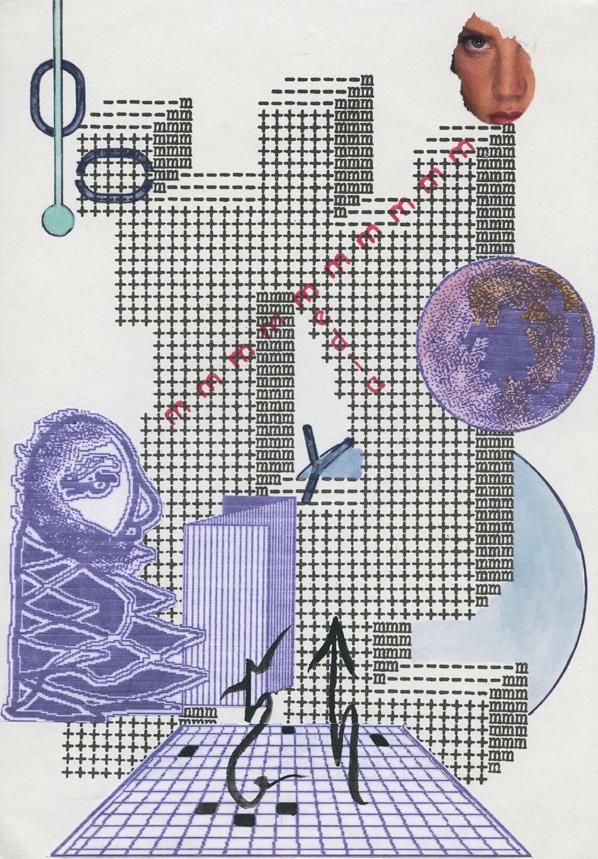
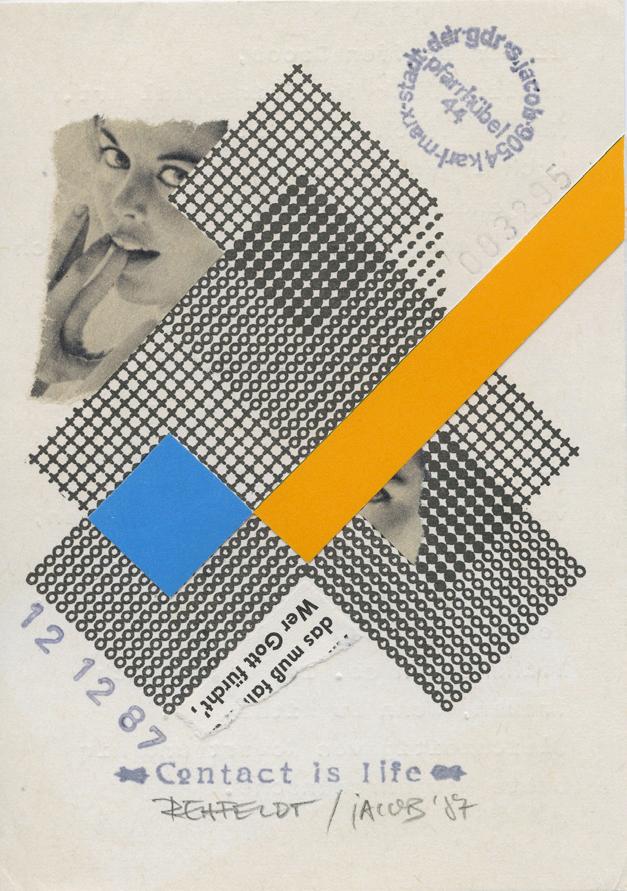
19
ARTISTS AND RUTH
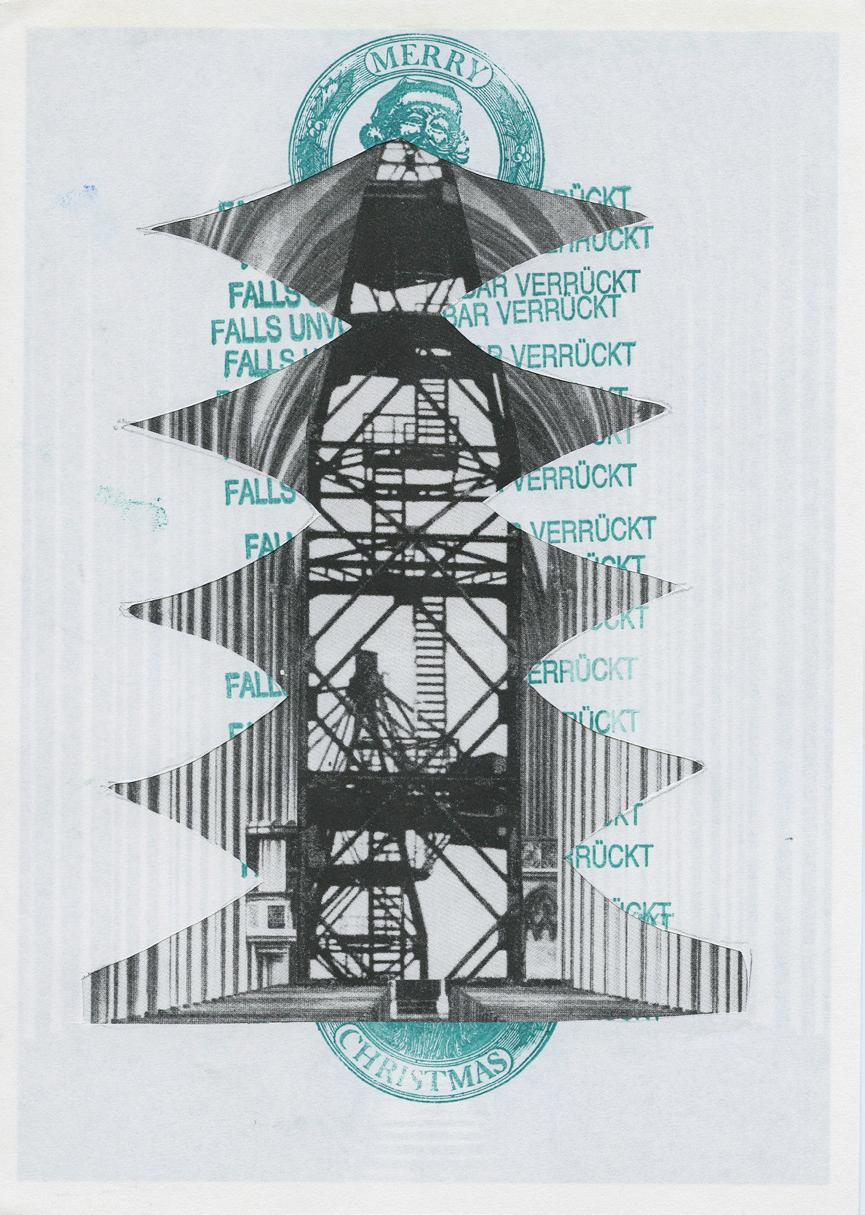
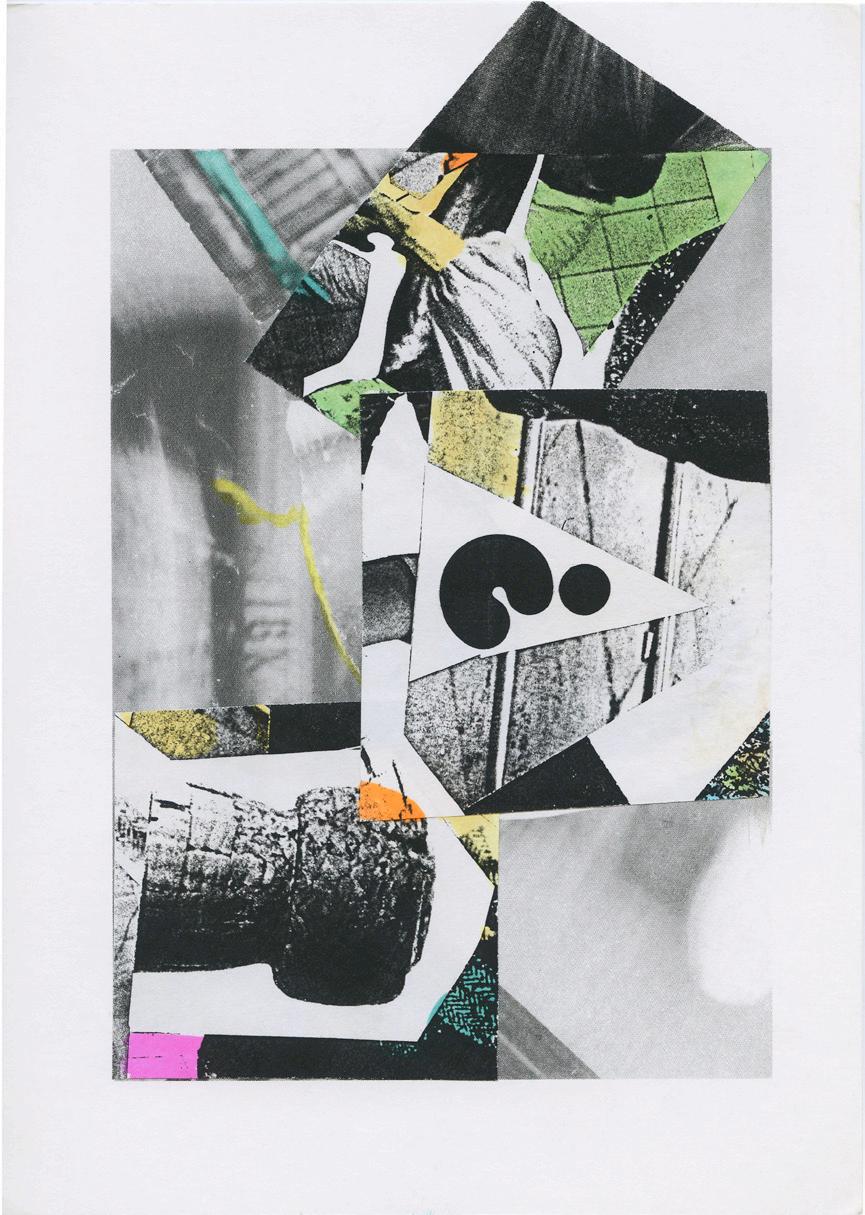
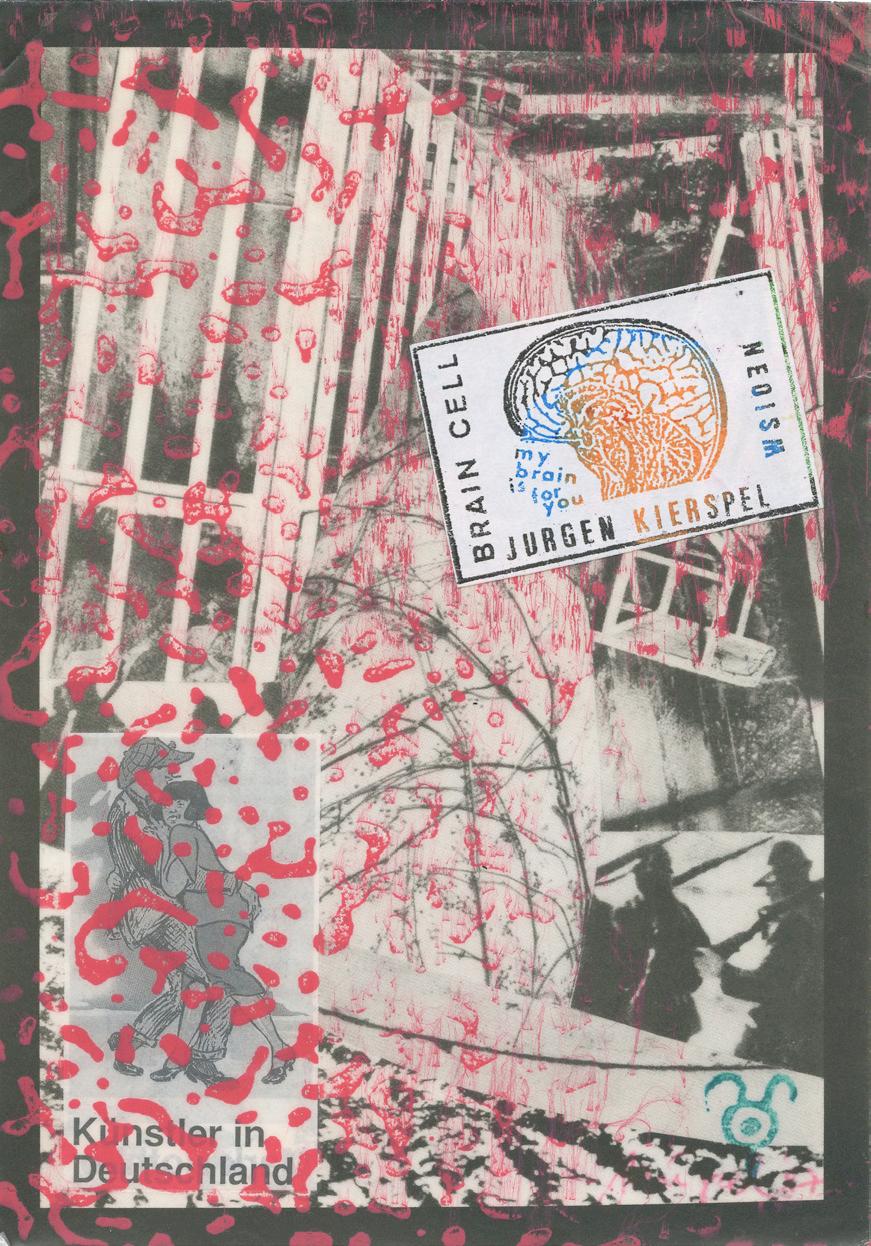
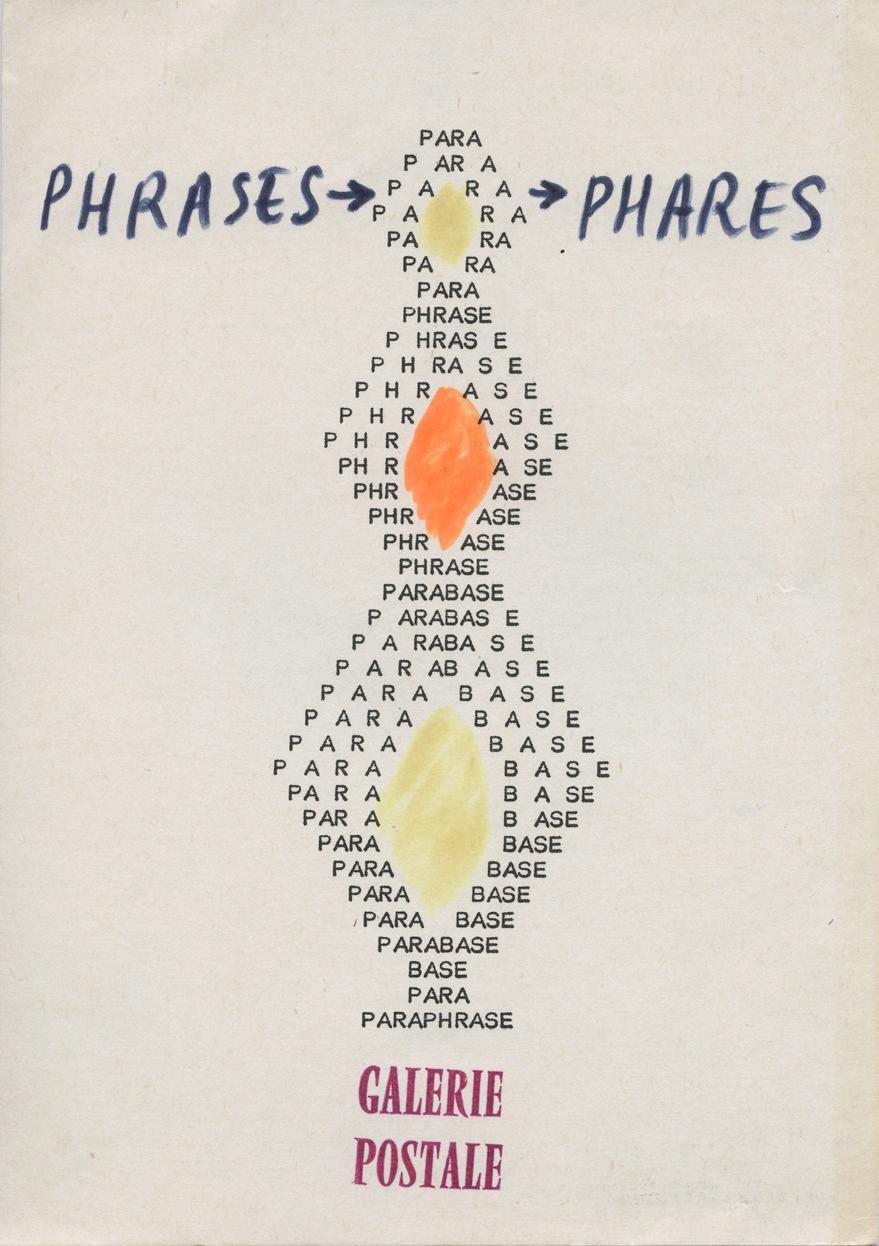
20
Ruth Wolf-Rehfeldt, Mail Art Collaborations, 1987, Selection from 51 postcards, collaborations with different artists. Courtesy of The Artist and ChertLüdde, Berlin
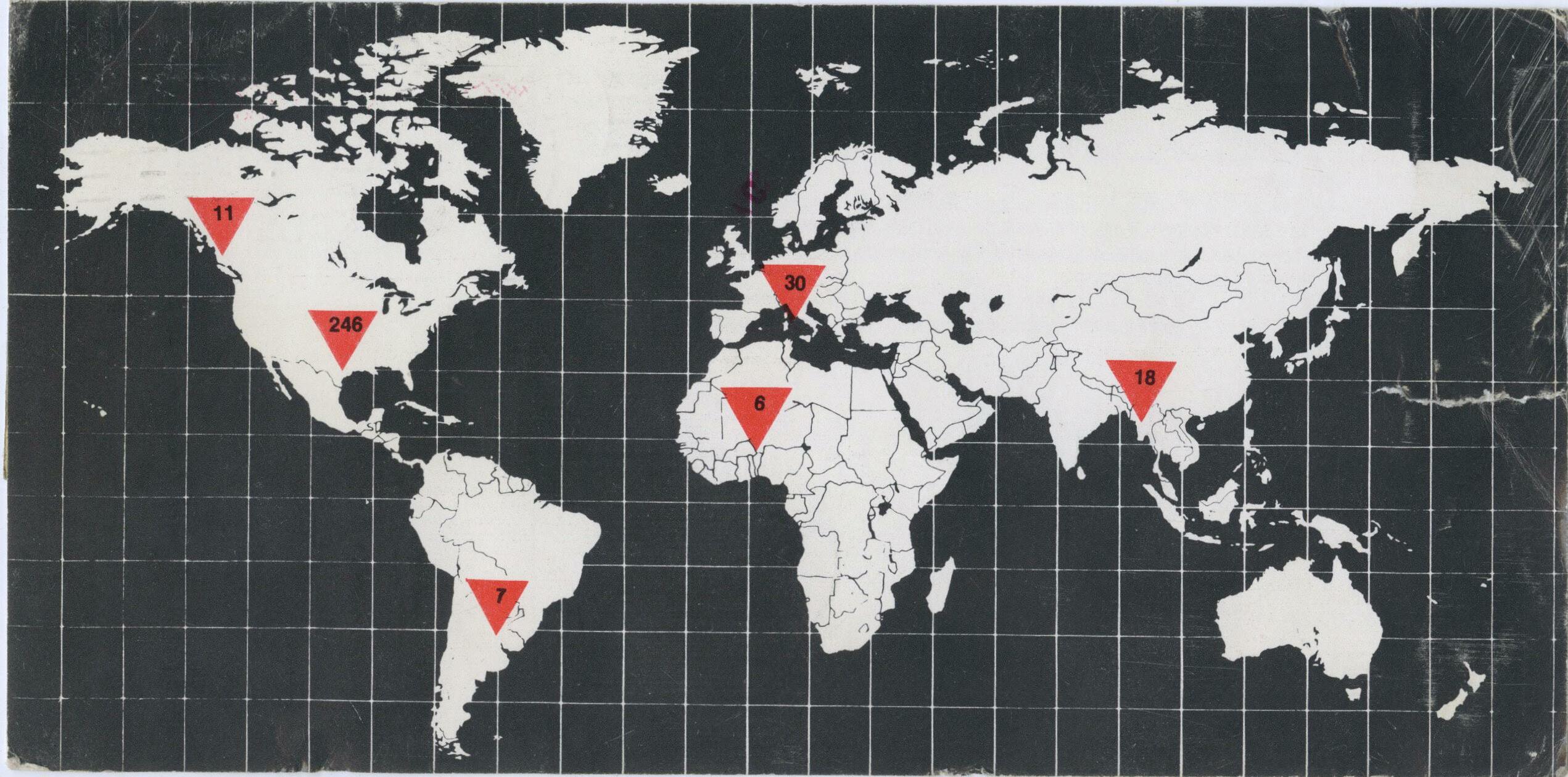
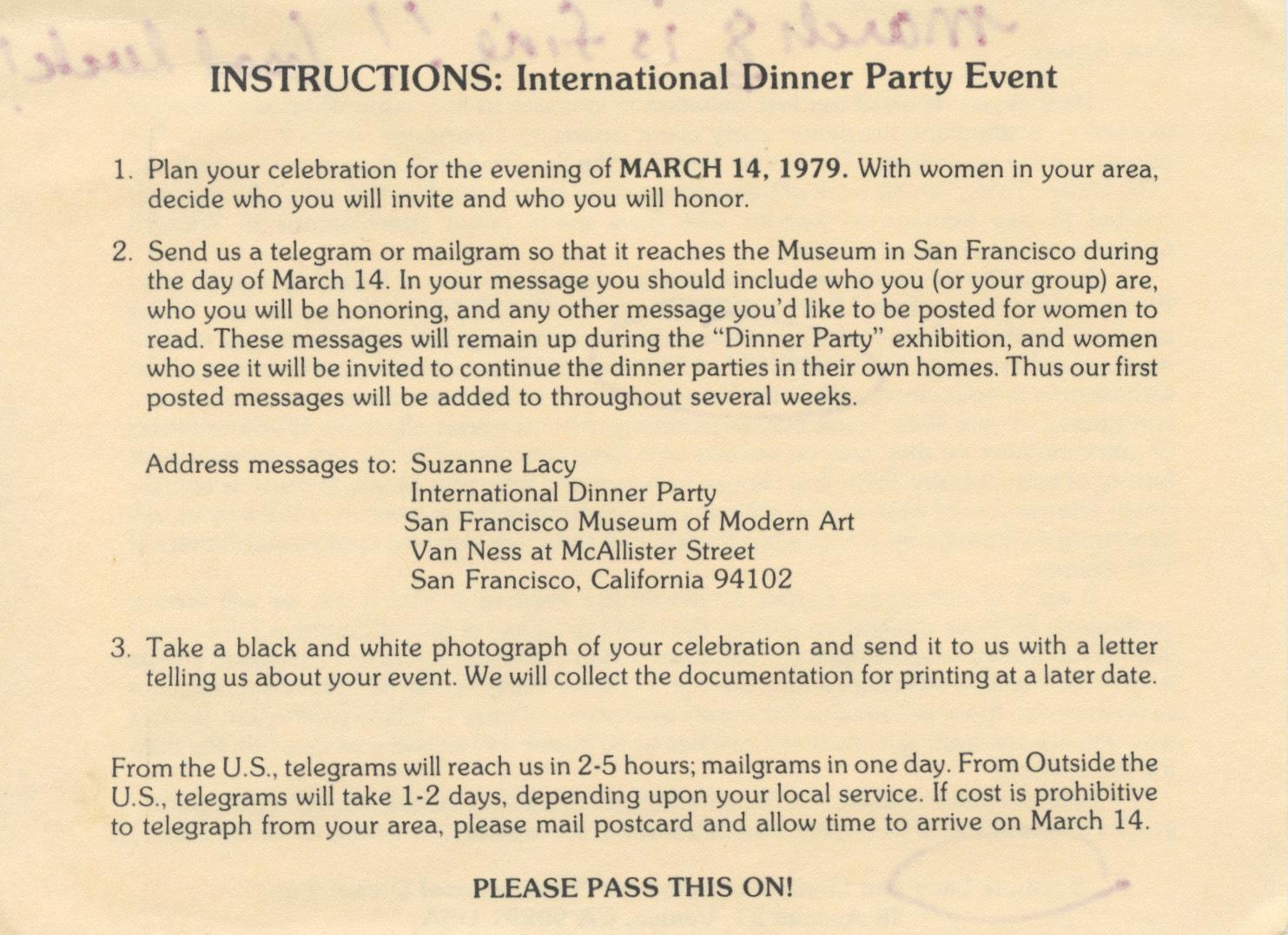
21
Suzanne Lacy to Ruth Wolf-Rehfeldt
Video
Signs from Signs (Zeichen aus Zeichen), Film portrait of Ruth Wolf-Rehfeldt, interview by Lutz Wohlrab, director Jennifer Chert, camera and editing Joji Koyama, 13 minutes.
Courtesy of the artist, The Mail Archive of Ruth Wolf-Rehfeldt and Robert Rehfeldt, and ChertLüdde
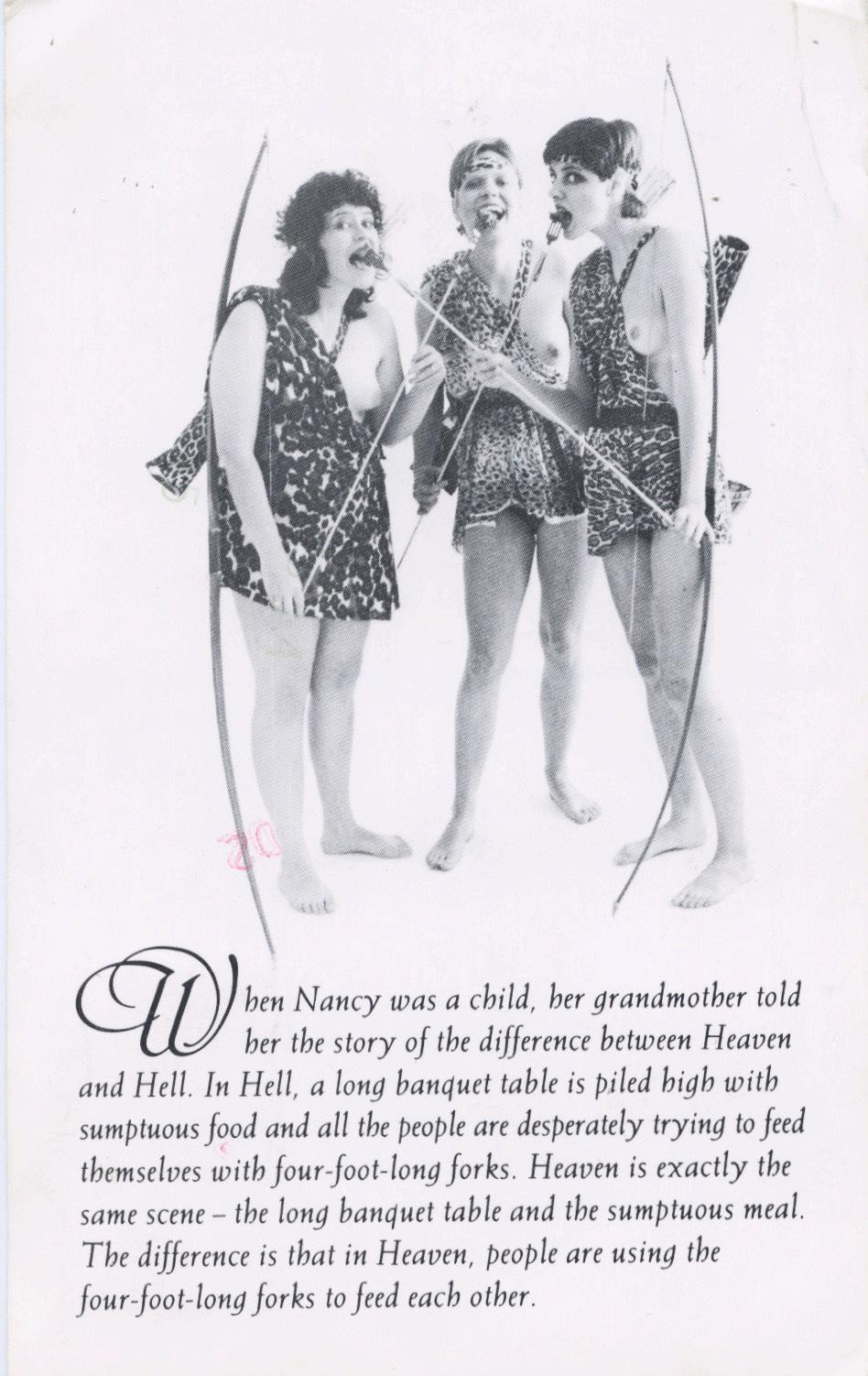
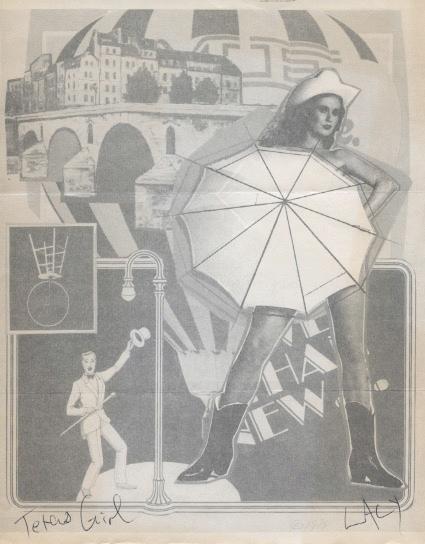 Suzanne Lacy to Ruth Wolf-Rehfeldt
Suzanne Lacy to Ruth Wolf-Rehfeldt
22
Referencing Marcel Duchamp’s first readymade Air de Paris from 1919—a sample of Parisian atmosphere—this work encapsulates air and ashes from Malibu during the 2019 fire season. One hundred years after Duchamp’s gesture, Horvitz transposed the idea into a time and place of fires, Covid-19, and boarded-up store fronts. His hand-blown vessels approximate Duchamp’s forms, which in turn were based on glass ampoules used in Parisian pharmacies.
David Horvitz, When the Ocean Sounds, 2018/2022, billboard. Courtesy of the artist and ChertLüdde Gallery
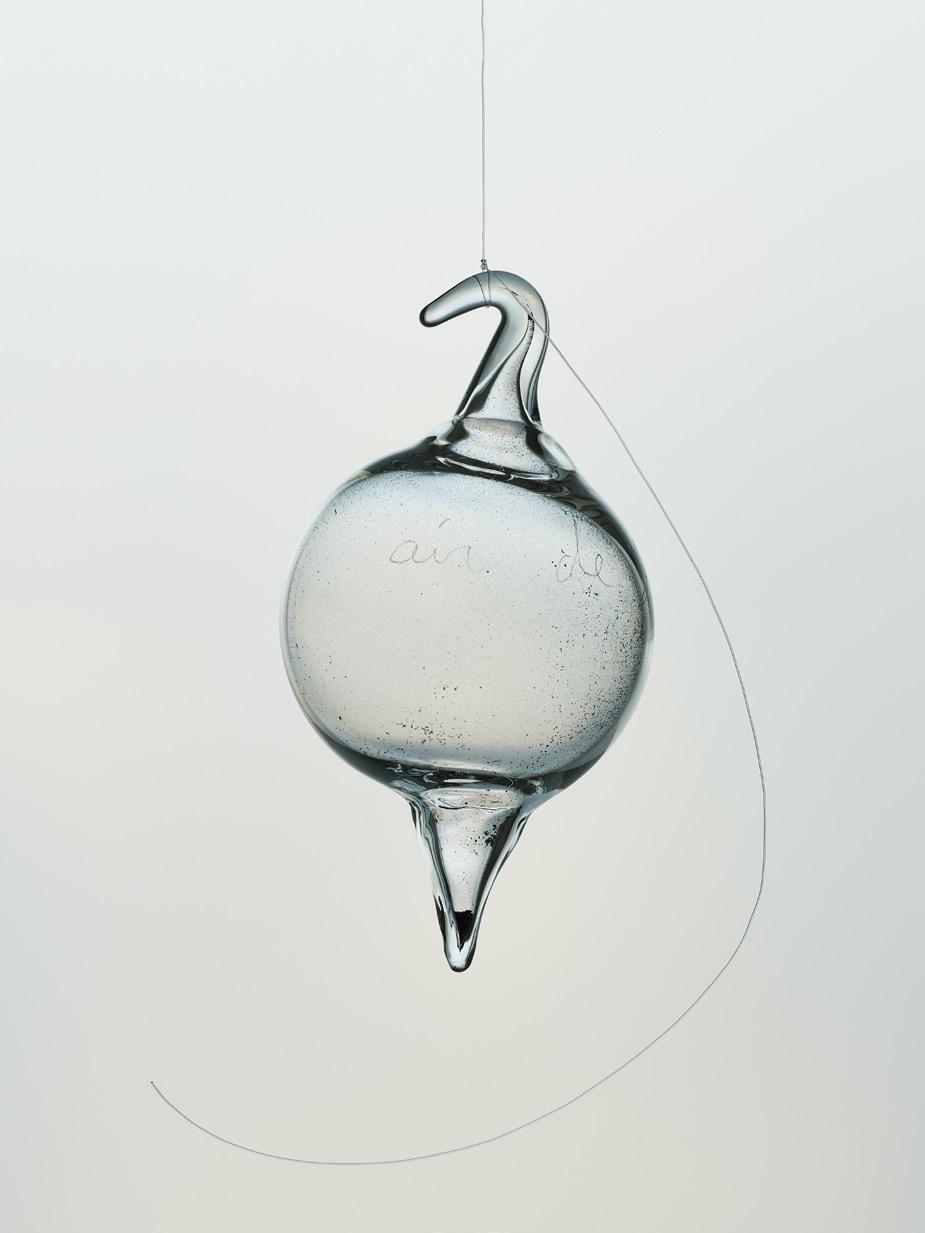
In this work of visual poetry, which can be found as a billboard on the museum’s outer wall on Culver Boulevard, Horvitz transcribes the sounds of the ocean near Palos Verdes, Los Angeles. The transcrip tions have been used as a “score” for human voices to imitate the sound of the ocean. The work references sound scores by composers like John Cage and by Pauline Oliveros, to whom this work is dedicated.
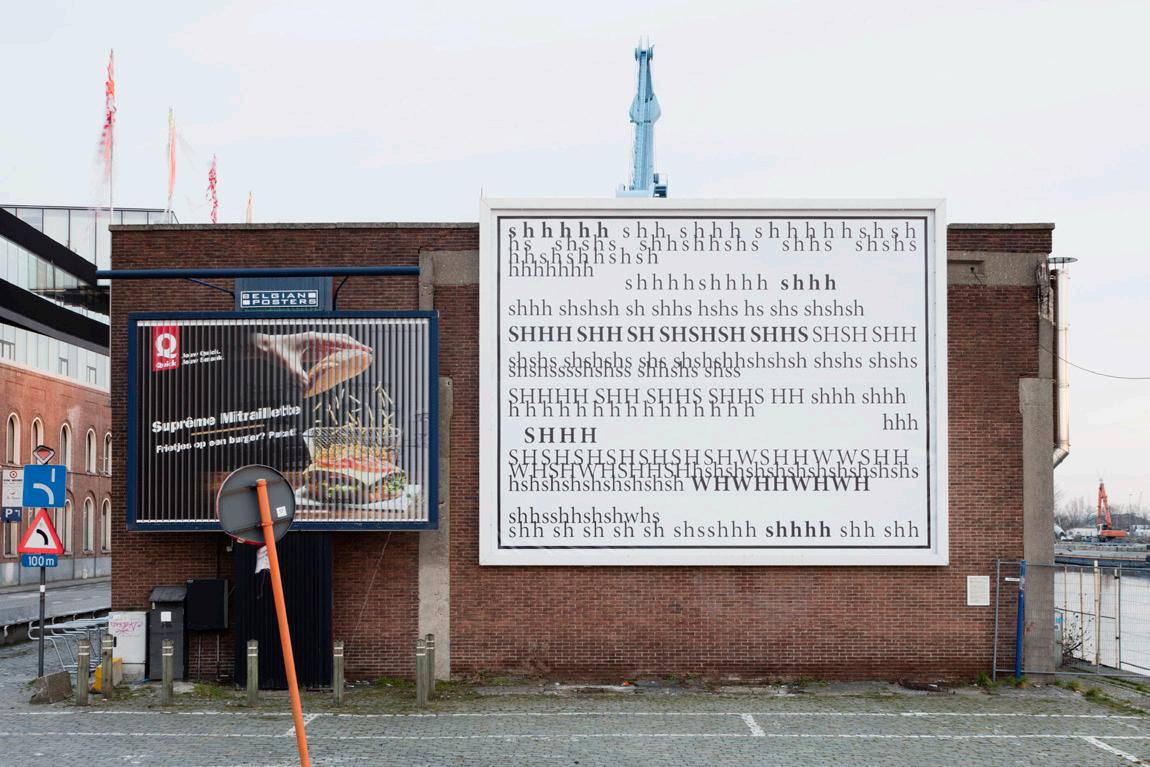
DAVID HORVITZ
David Horvitz, Air de LA, 2019-2020, engraved glass ampoules with ash from the 2019 fires in Los Angeles. Courtesy of the artist
23
This work addresses the disappearance of the night sky due to light pollution in cities—with lights on all the time, obscuring our view of the stars and luminaries, where is there room to dream? The artist imagines the night sky as a public right, similar to that of the beach in Cali fornia. These lights, in the name of security and a 24-7 culture of production and consumption, have obscured the wonder and our relationship to cosmic distance one has looking up into the heavens. Not to mention the destruction of ecologies, or the disruption of animal migrations that are dependent on the darkness of night. Hand-sewn in Kosovo by Shkurte Halilaj, the mother of artist Petrit Halilaj, this work took on another level of meaning. It was produced as a gesture of solidarity and friendship toward the Kosovar artist. Halilaj withdrew from the 58th October Salon, Belgrade Biennale in 2021, after controversies arose surrounding the Serbian authorities’ refusal to officially recognize the Republic of Kosovo in the exhibition as an autonomous state. Horvitz, who was also in the biennial, decided that his work should be made in Kosovo, and that Halilaj’s mother should sew it (Halilaj often uses his mother in his own art-works). The history be tween the two countries (Kosovo declared independence in 2008 from Serbia), which were part of the Socialist Federal Republic of Yugoslavia until 1992, is painful and traumatic, and still very far from conclusion. Like many of Horvitz’s works, the artist transforms one discourse with a small gesture to blend into a wider net of associations. Thus, through this work, he confronts ecologies beyond our urban structures, such as a night sky lit only by stars, now a rare sight.
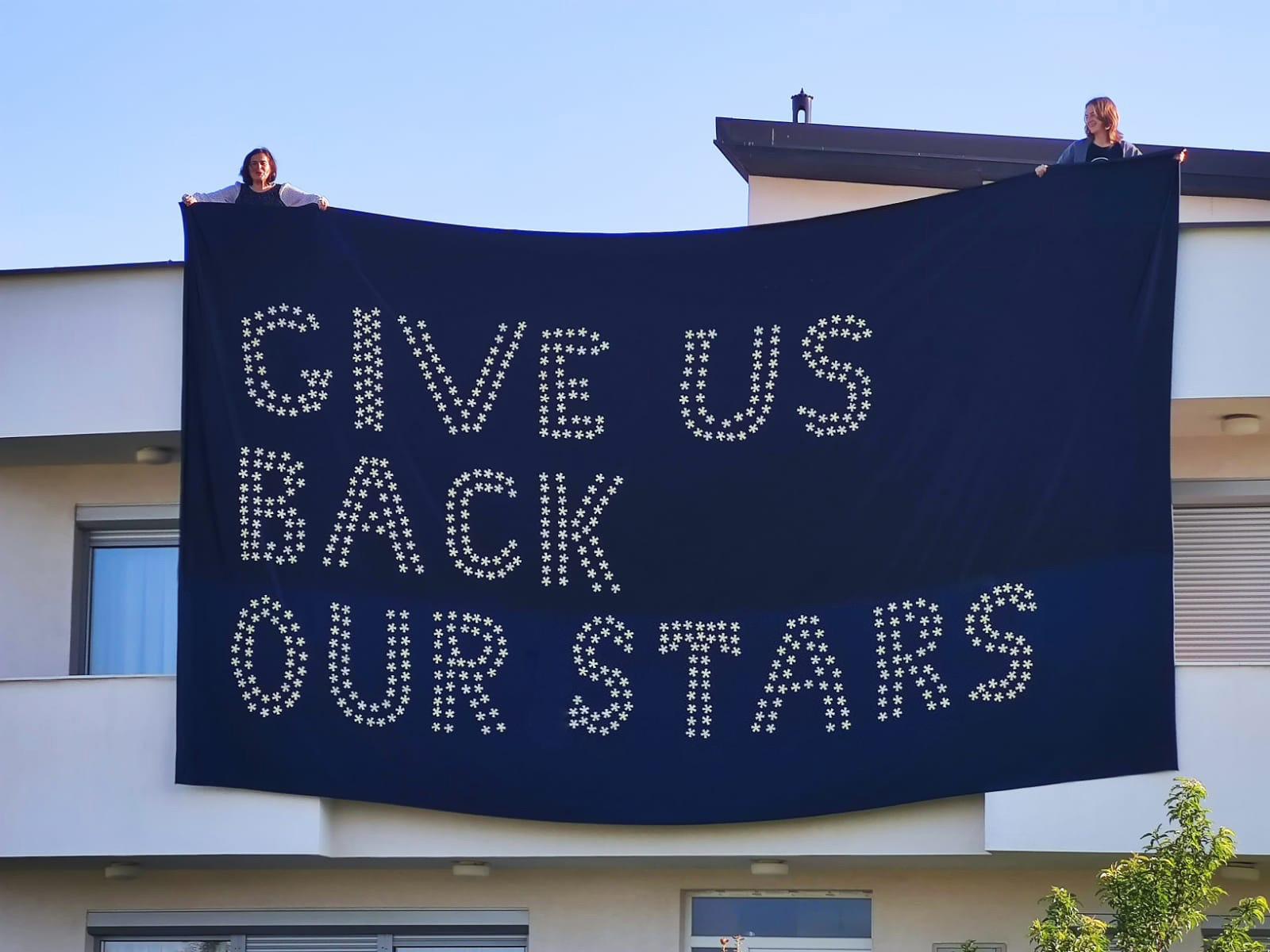 David Horvitz, Give Us Back Our Stars, 2020-2021, fabric in woven cotton hand-sewn in Kosovo by Shkurte Halilaj. Courtesy of the artist
David Horvitz, Give Us Back Our Stars, 2020-2021, fabric in woven cotton hand-sewn in Kosovo by Shkurte Halilaj. Courtesy of the artist
24
David Horvitz, The Distance of a Day, 2013, digital video on two iPhones, duration 12 minutes. Courtesy of the artist and ChertLüdde
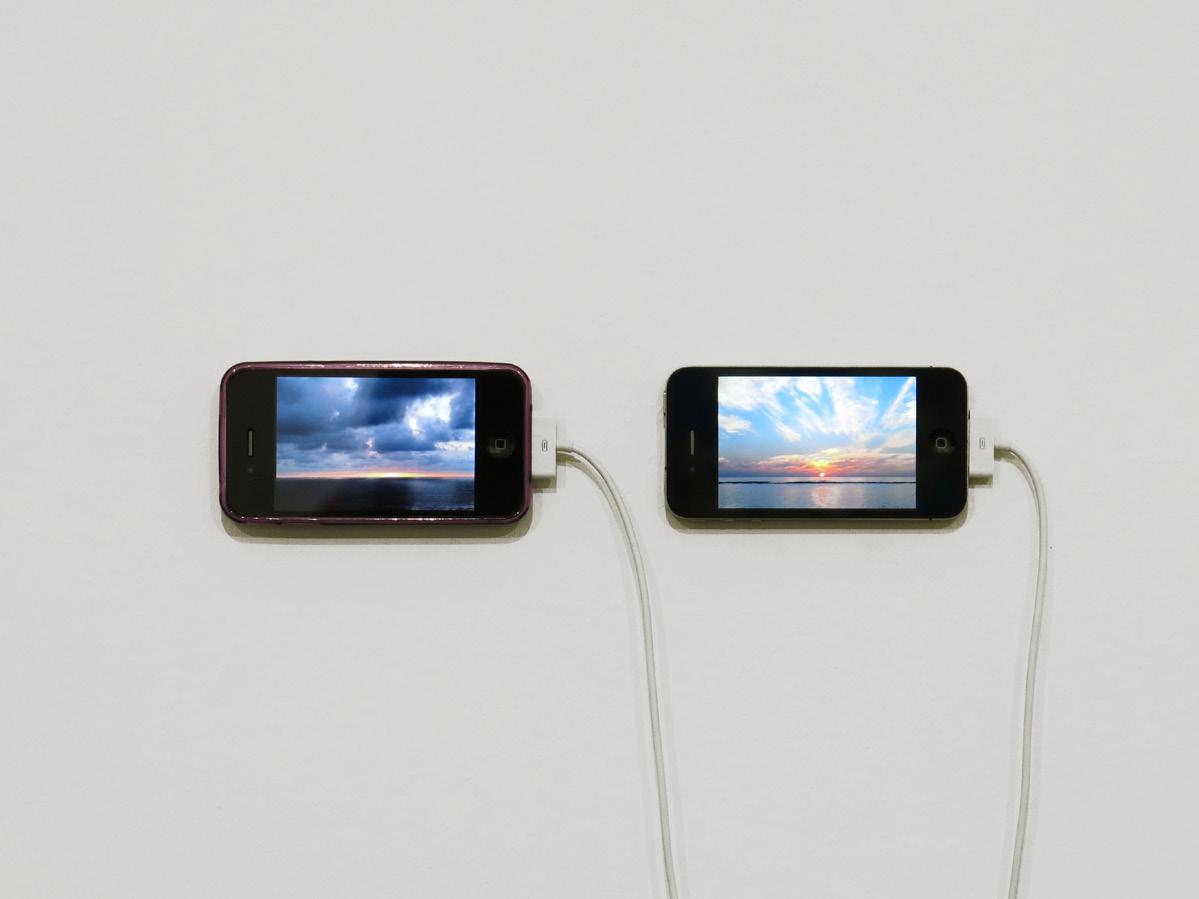
On February 7 (Los Angeles) and 8 (Maldives), 2013, Horvitz asked his mother to shoot a video of the sunset from the Palos Verdes peninsula in Los Angeles with her iPhone. At the very same time, the artist recorded the rising of the sun from the Maldives. While the sun set over the Pacific Ocean, it rose
from the Laccadive Sea. Separated by thousands of miles, Horvitz and his mother were watching the sun together. Originally, the word “journey,”—from the French word “journée”—indicated the dis tance traveled in one day. In this work, the spatial distance separating Horvitz and his mother was not defined by travel but by the delimitations of the day itself. Standing in for the two iPhones that were used to shoot videos on opposite sides of the world, these iPhones showcase the original footage now displayed just inches away from each other of time with the creation of the United States time zones. However, in their new context animated by the wind, the twelve bells, one for each hour, will ring randomly throughout the day, in a sense de-standardizing time.
David Horvitz, The Day of a Thousand Hours, 2021, steel bells. Courtesy of the artist

Conceived as part of the New York High Line group exhibition The Musical Brain, Horvitz forged steel spikes and train tracks from the original High Line in the meat packing district into a series of twelve small bells sounding in the wind. The piece references the relationship of American railroad corporations to the standardization 25
David Horvitz, The Distance in Space this Traveled Between us / The Distance in Time this Trav eled Between Us, 2019/2022, two postcard towers at the height of David Horvitz and Ruth Wolf-Rehfeldt. Courtesy of the artist and ChertLüdde
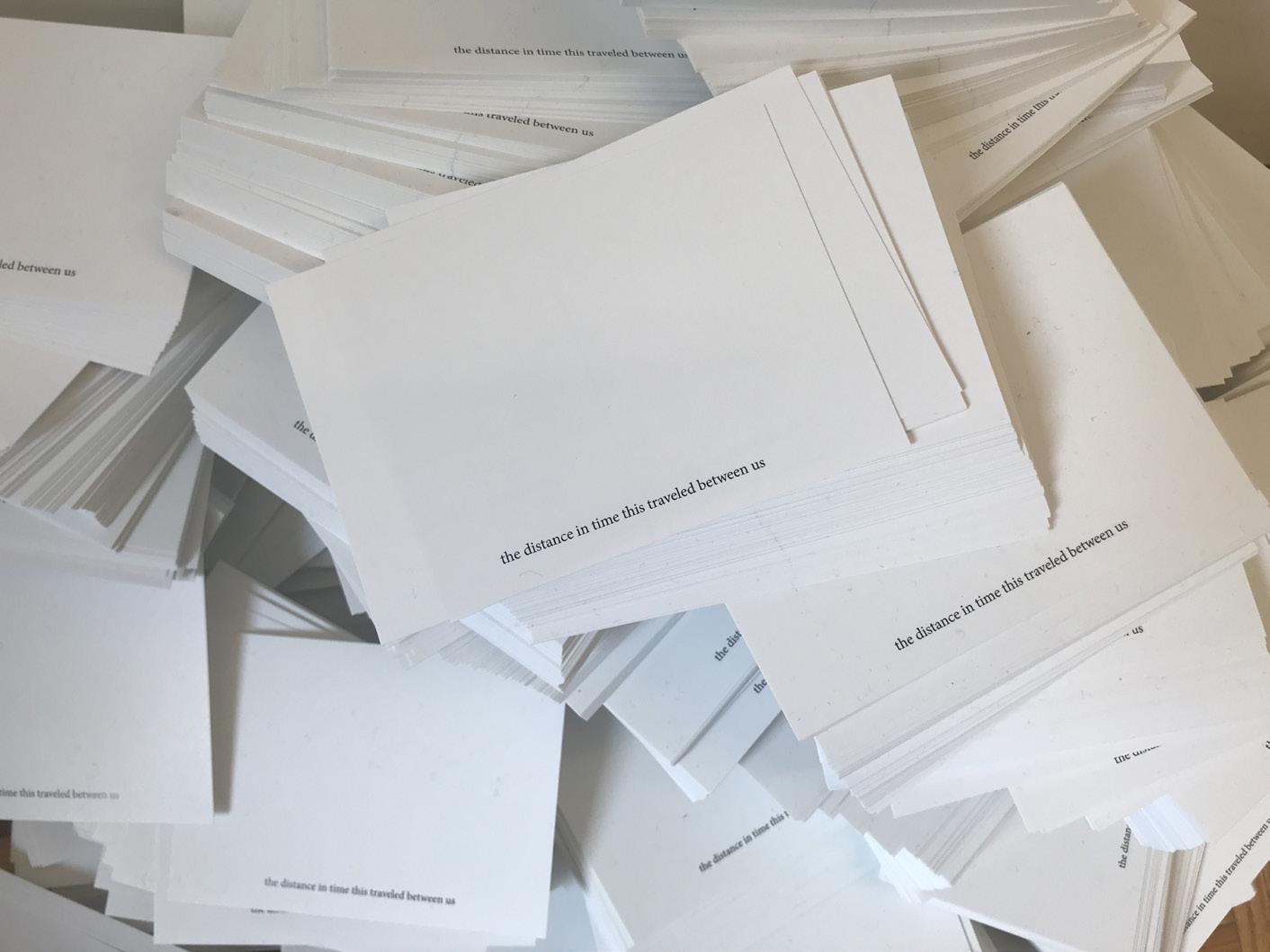
Two postcards are stacked at the height of David Horvitz (6’1”) and Ruth Wolf-Rehfeldt (5’2”).
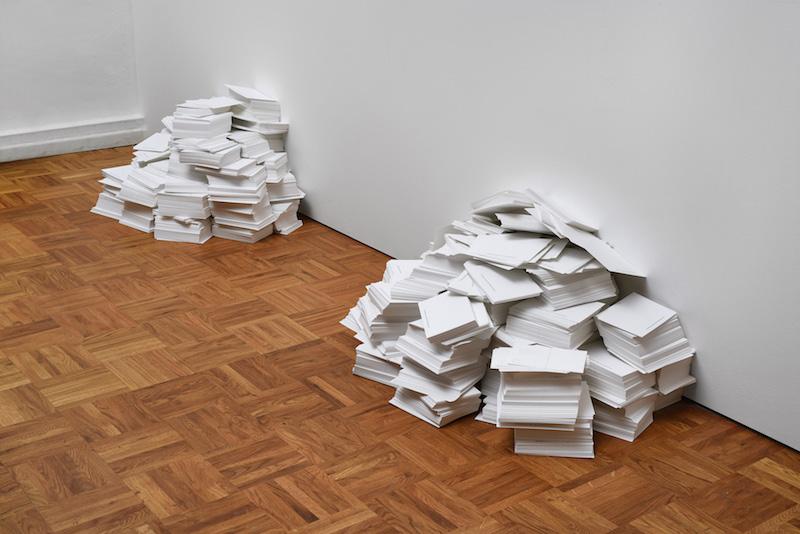
Visitors take a postcard from the top of each tower and type a letter on the Erika typewriter, the same brand Wolf-Rehfeldt used in East Germany. Over time, these towers will minimize, decrease, and disappear—only to be distributed to other people in other places.
At the end of the exhibition, all postcards will be mailed by the Wende Museum to your corre spondent. The Wende Museum will provide a postage stamp. If not addressed, all postcards will be mailed to the Tristan da Cunha post office, one of the remotest places on earth.
26
David Horvitz, Untitled (watercolors David sent to Ruth), 2015-2016, indian ink on paper. Courtesy of Ruth Wolf-Rehfeldt
David Horvitz to Ruth Wolf-Rehfeldt, Mail Art correspondence, 2013/14-today, paper, misc. materials. Courtesy of Ruth Wolf-Rehfeldt
In 2013, David Horvitz was sent to Ruth Wolf-Rehfeldt’s home by art historian Zanna Gilbert to conduct specific research in the vast mail art archive Ruth and her late husband, the artist Robert Rehfeldt, had created. After this initial meeting between the two artists, Horvitz started to mail Wolf-Rehfeldt small, often text-based, works. He sent herThe Sky in Los Angeles and The Wind from his home in New York, and later California, to her home in Berlin, and continues to mail her to this day.
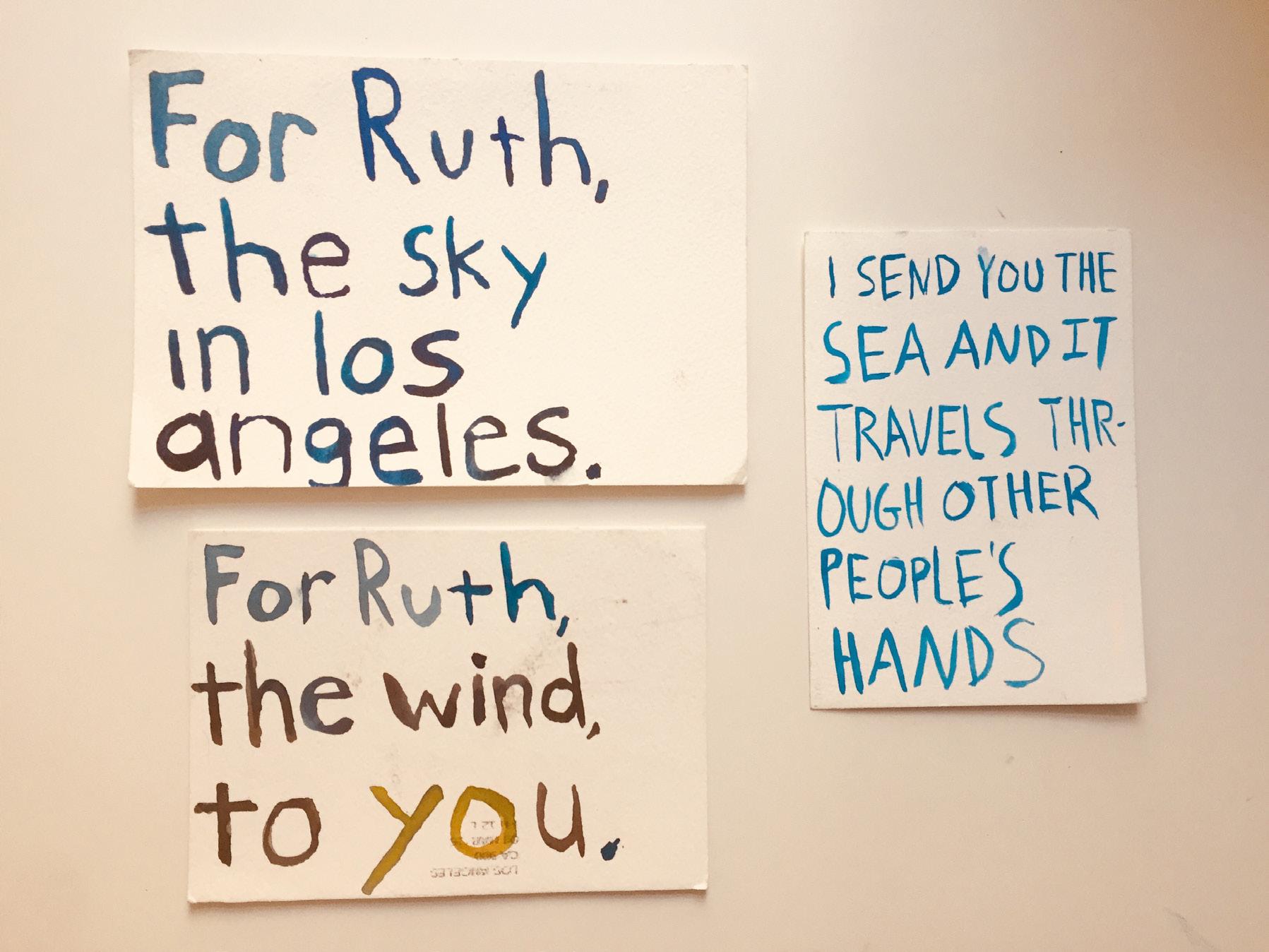
27
Other People is a collection of digital photographs found using facial recognition software. Horvitz used photographs of his own face to search databases of online images. The photographs presented here are misidentifications that AI technology deemed to be the artist’s face. These photographs are “other people,” people unknown to Horvitz, with a slight familiarity and similarity, living parallel lives. The ethics of these image databases are ambiguous. They are formed from digital photographs dredged from the internet. Access to some of these private databases are sold to law enforcement agencies who use the images to enhance their techniques of surveillance and control. In most cases, the persons depicted in the photograph have no idea their faces have been stored in these databases.This work was inspired by Horvitz’s research of training materials for East German border guards at Checkpoint Charlie in the Wende collection, some of which are on view in Open Storage. This artwork is part of a larger project developed at The Private Practice Residency at MobileCoin.
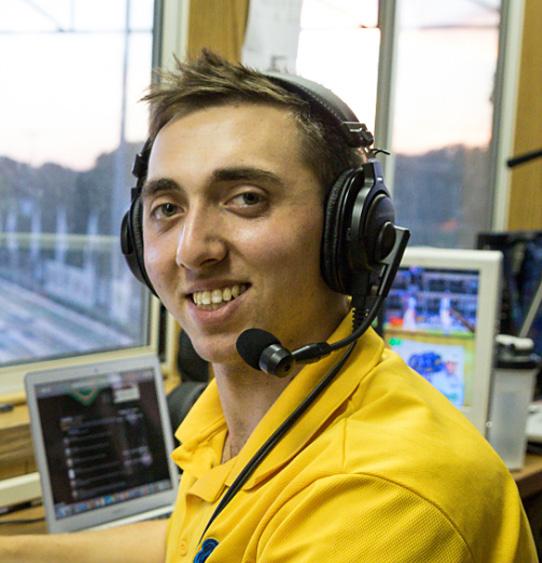
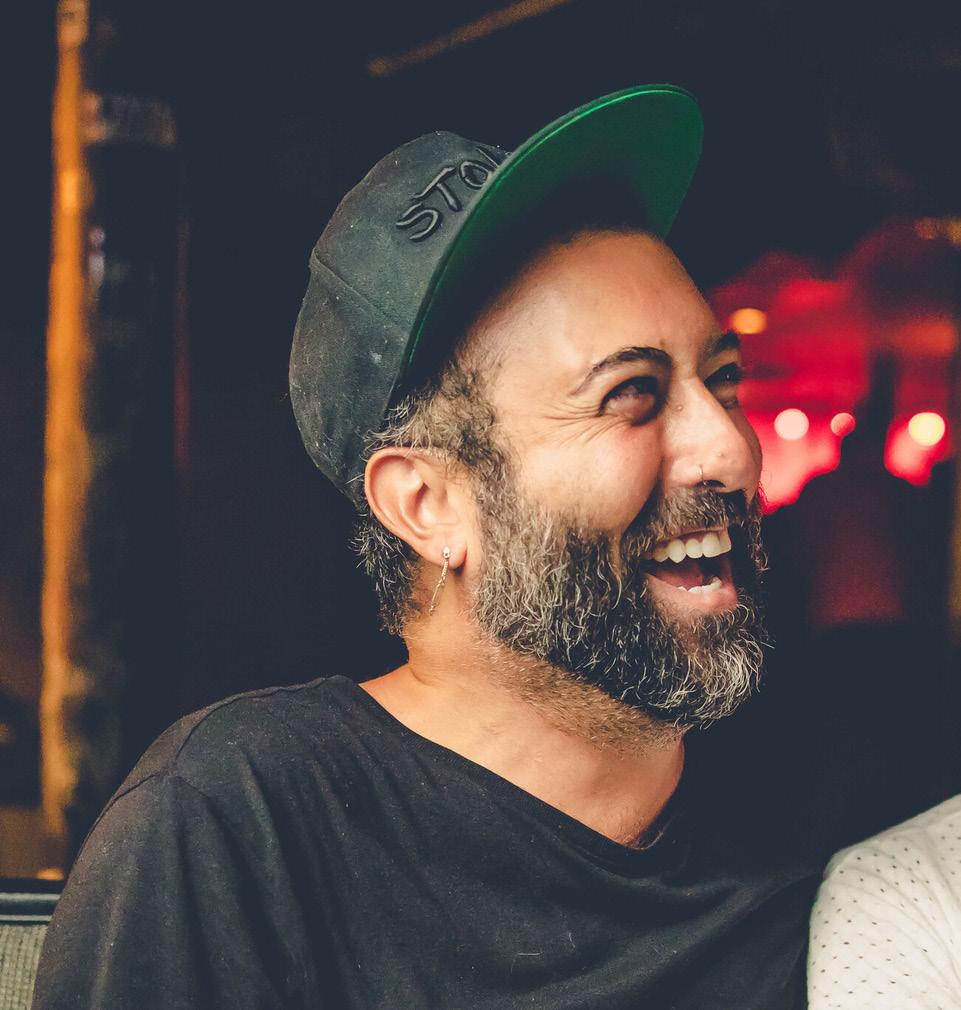
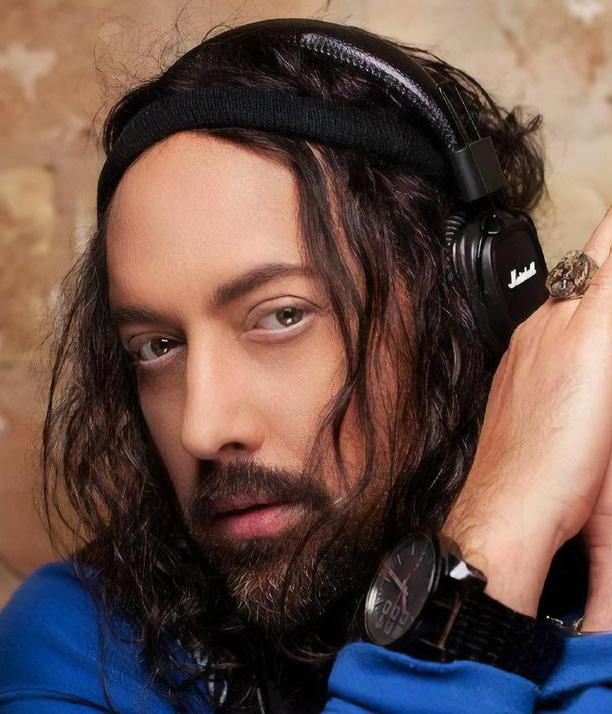
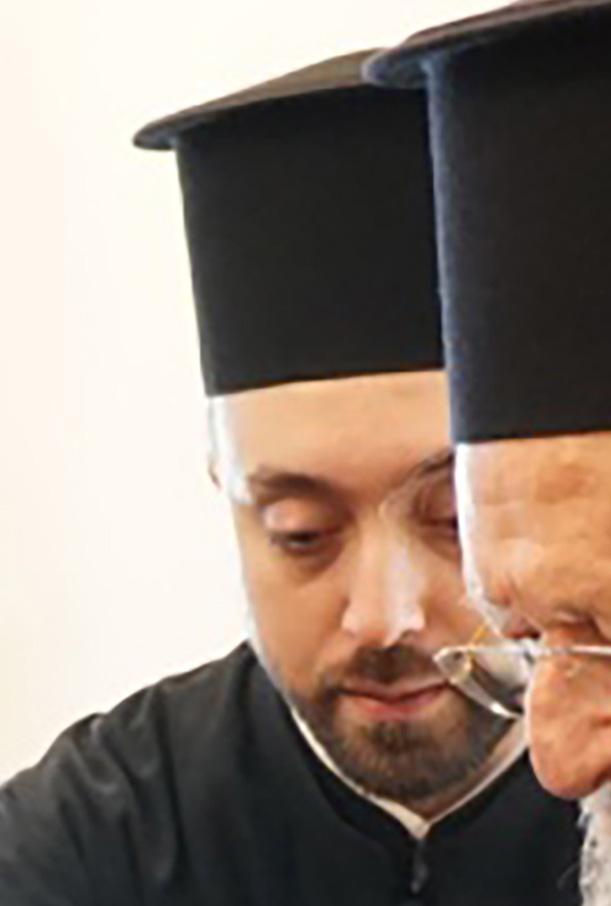 David Horvitz, Other People, 2022, photographic installation. Courtesy of the artist
David Horvitz, Other People, 2022, photographic installation. Courtesy of the artist
28

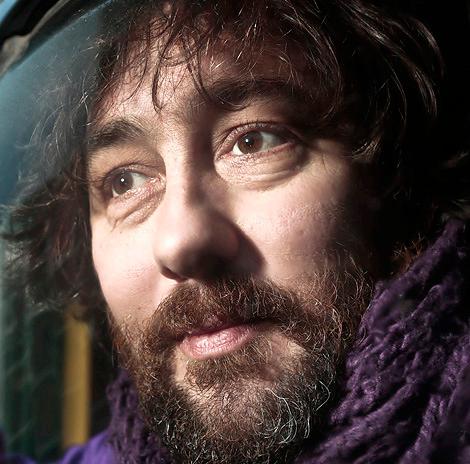
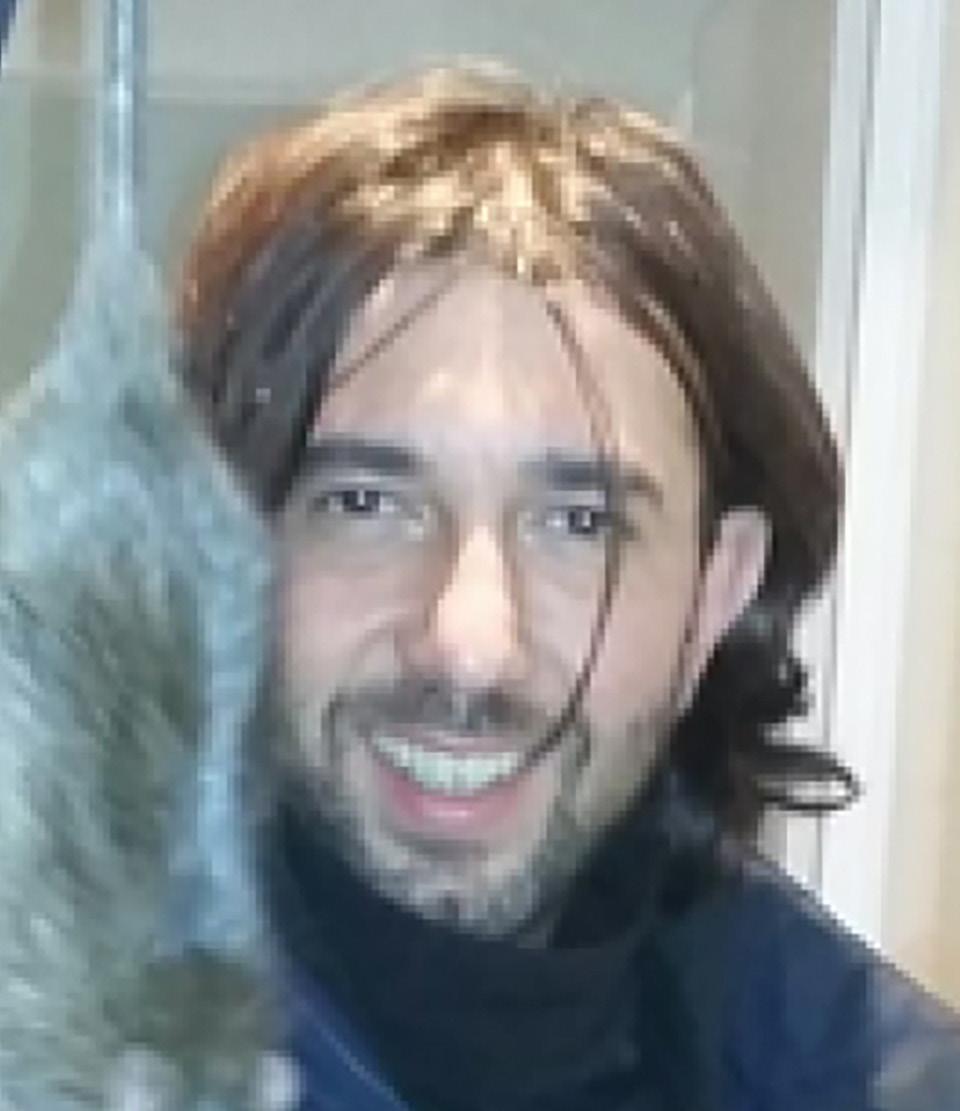

29
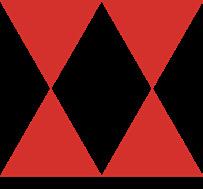 WENDE MUSEUM
The Wende Museum || 10808 Culver Blvd. || T: (310) 216-1600 || wendemuseum.org
WENDE MUSEUM
The Wende Museum || 10808 Culver Blvd. || T: (310) 216-1600 || wendemuseum.org

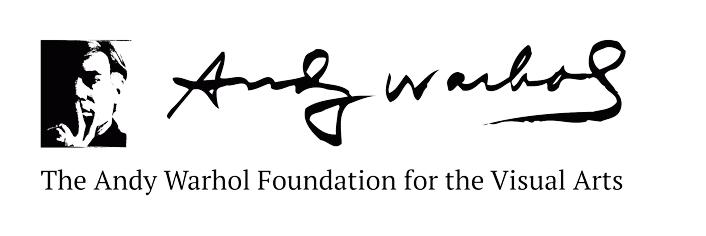















































 Suzanne Lacy to Ruth Wolf-Rehfeldt
Suzanne Lacy to Ruth Wolf-Rehfeldt


 David Horvitz, Give Us Back Our Stars, 2020-2021, fabric in woven cotton hand-sewn in Kosovo by Shkurte Halilaj. Courtesy of the artist
David Horvitz, Give Us Back Our Stars, 2020-2021, fabric in woven cotton hand-sewn in Kosovo by Shkurte Halilaj. Courtesy of the artist








 David Horvitz, Other People, 2022, photographic installation. Courtesy of the artist
David Horvitz, Other People, 2022, photographic installation. Courtesy of the artist



